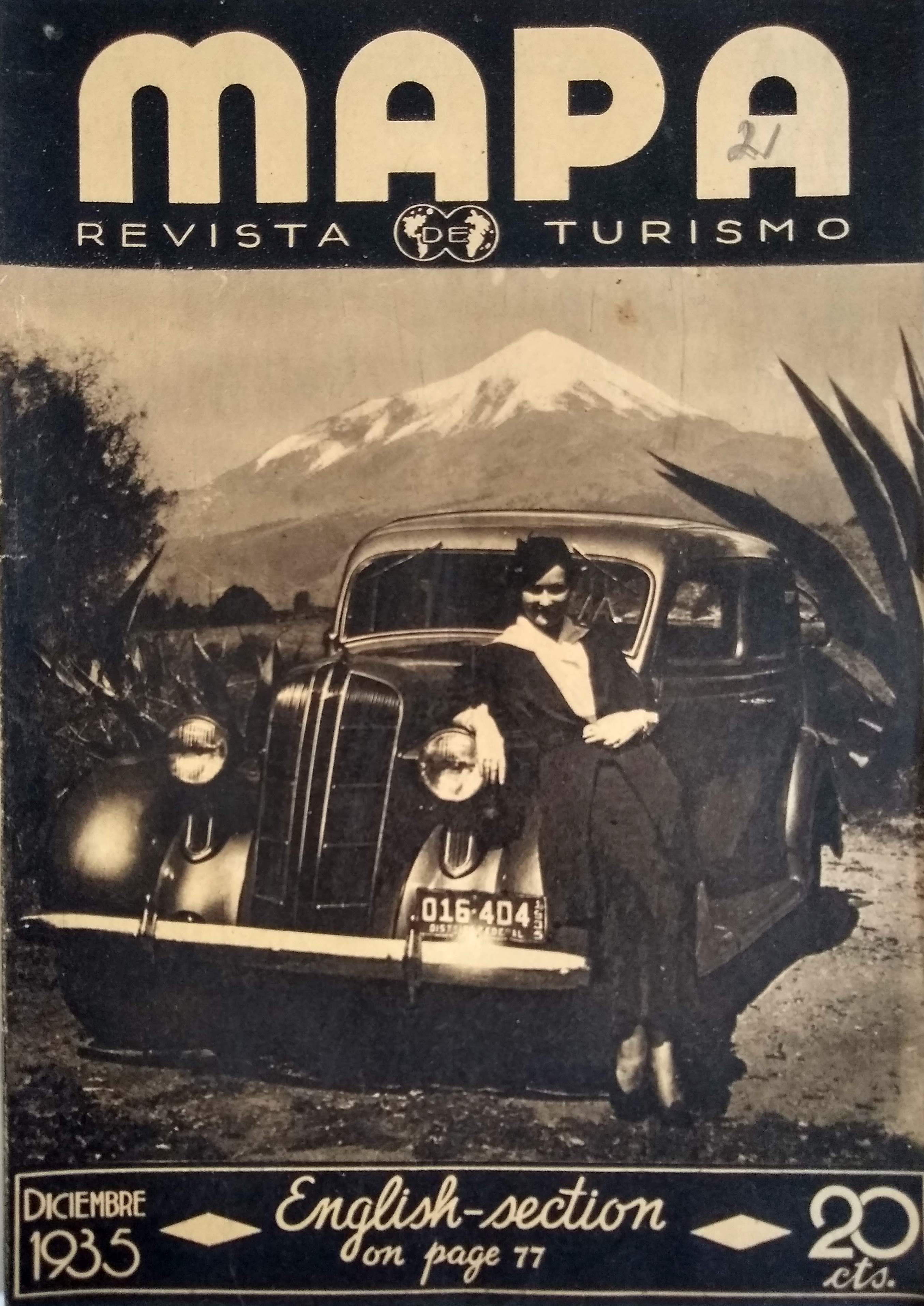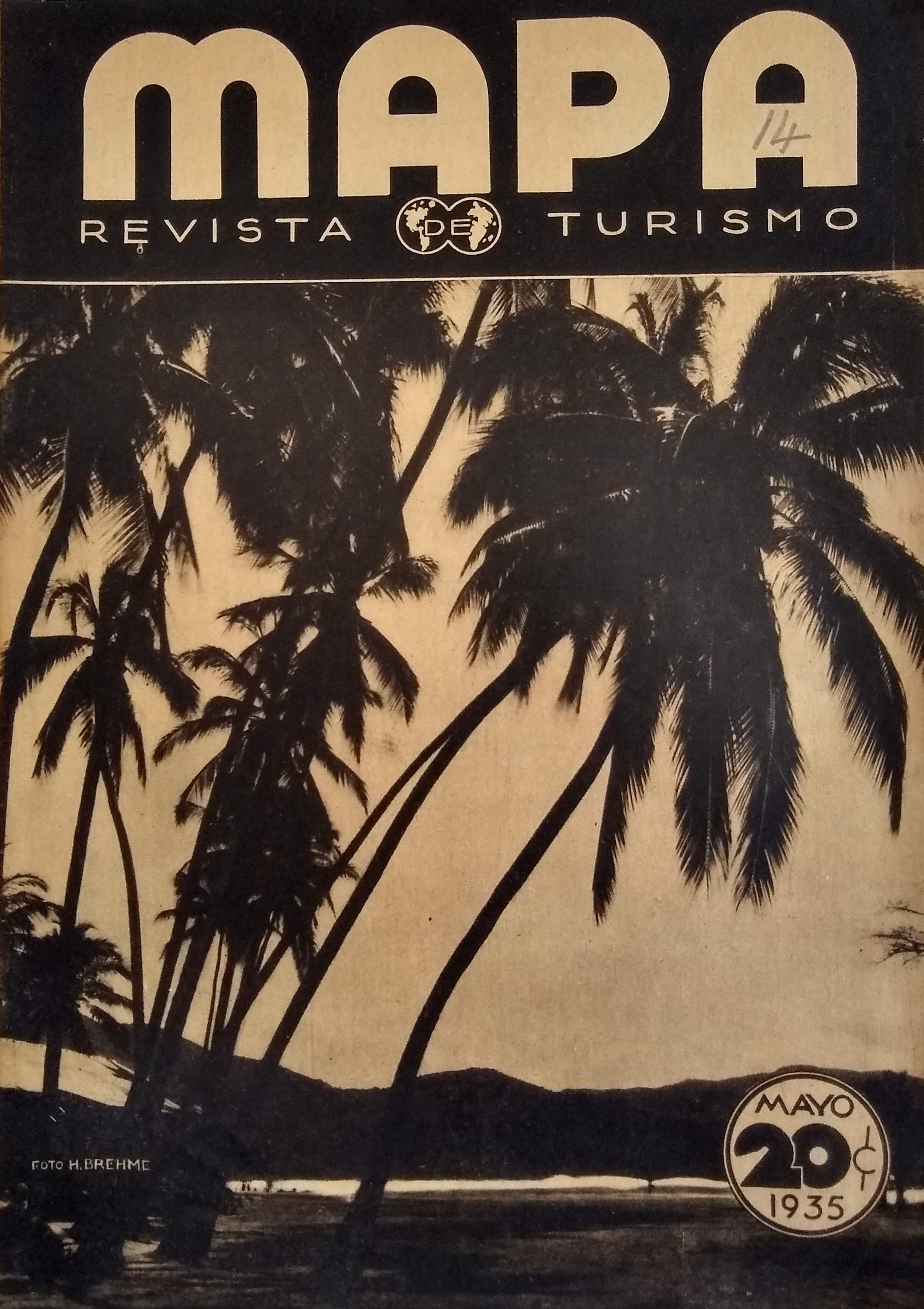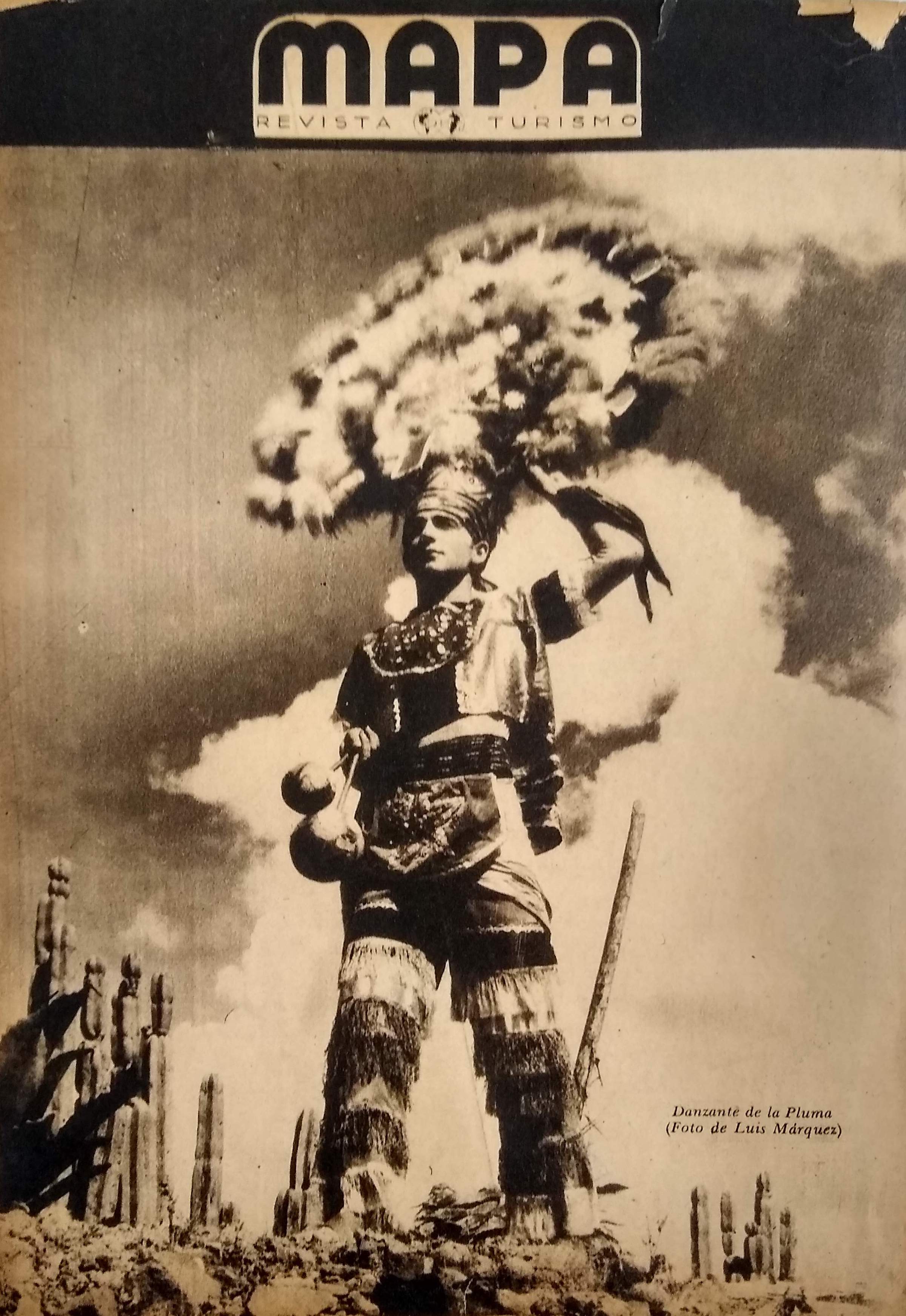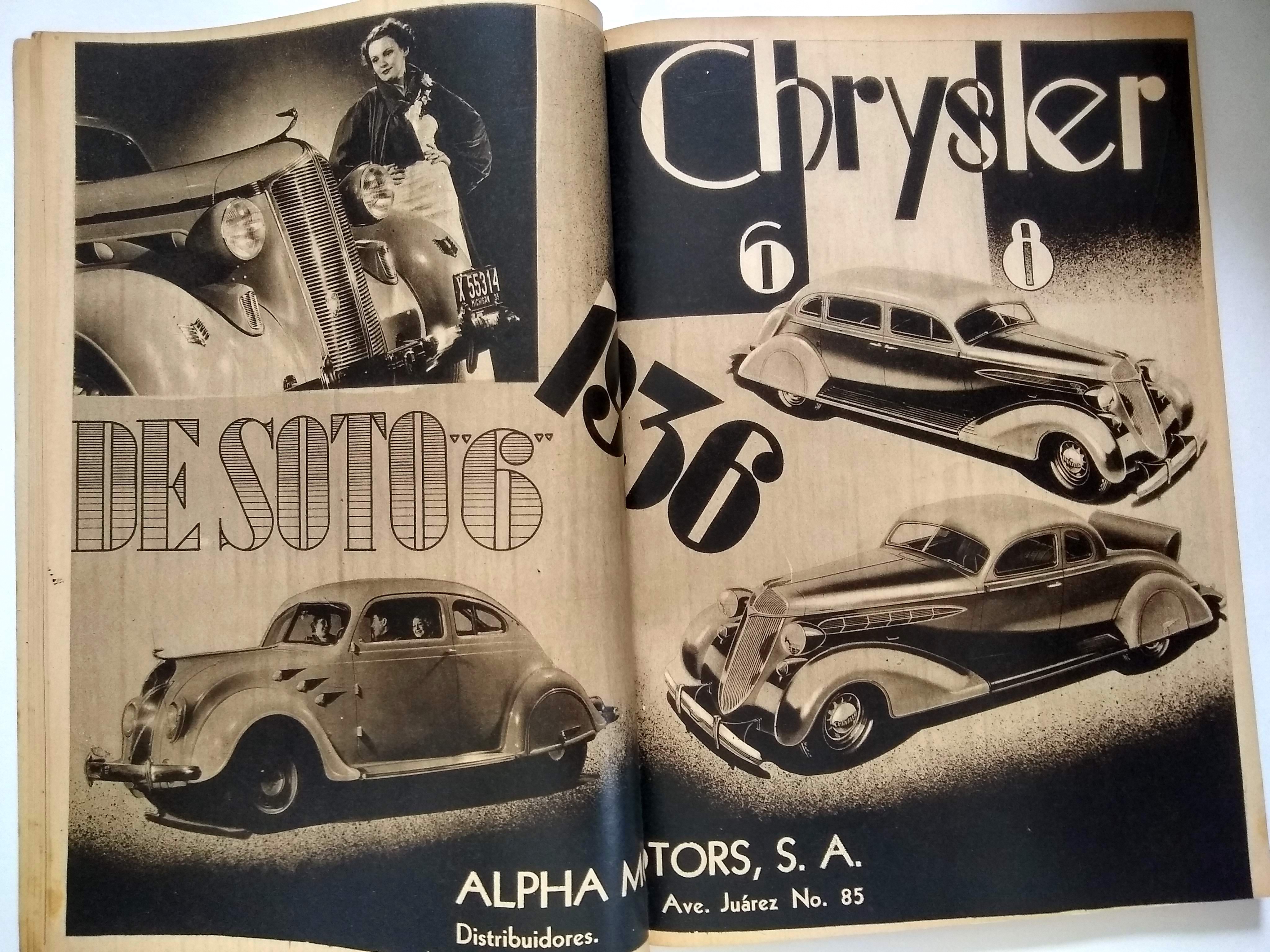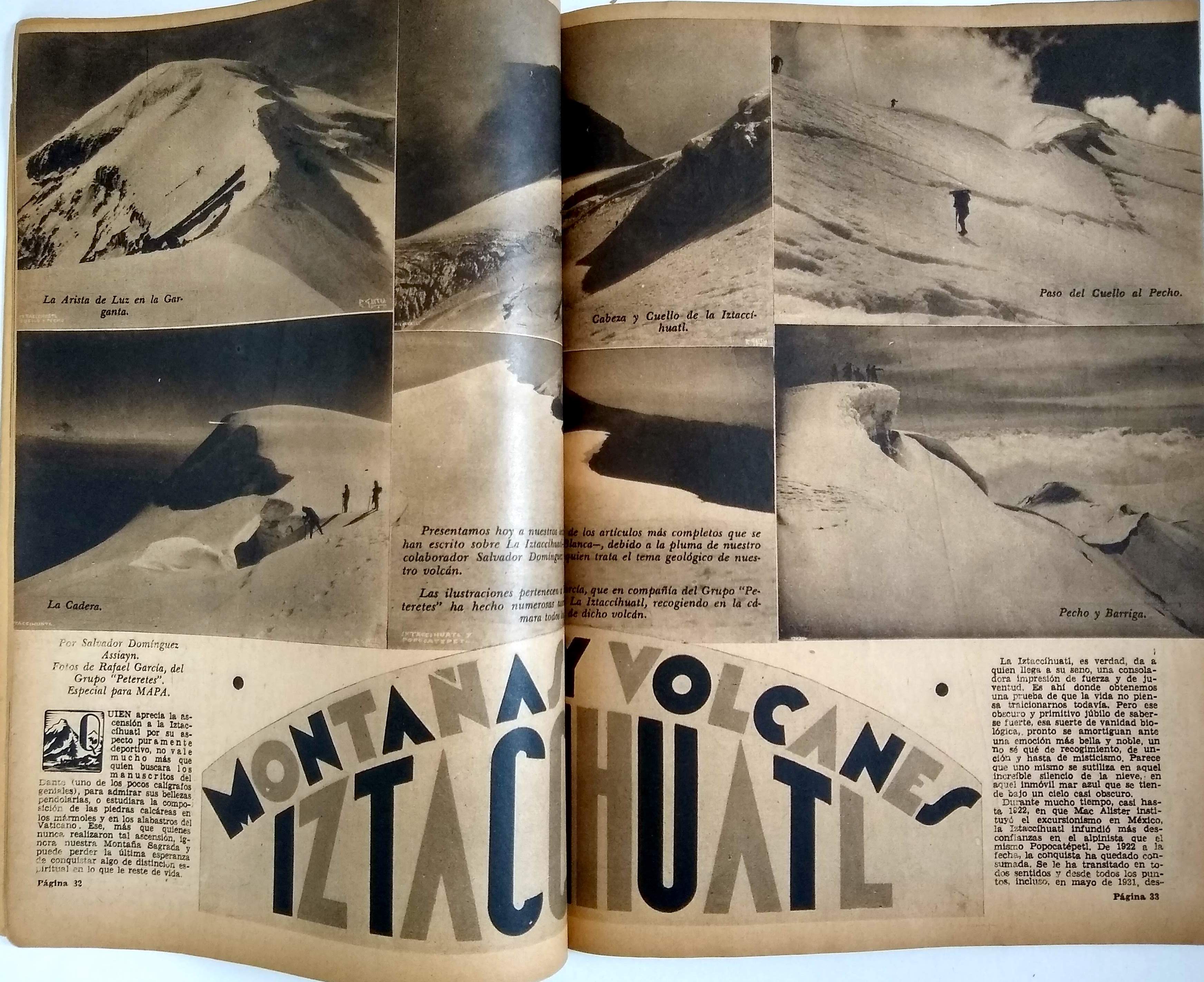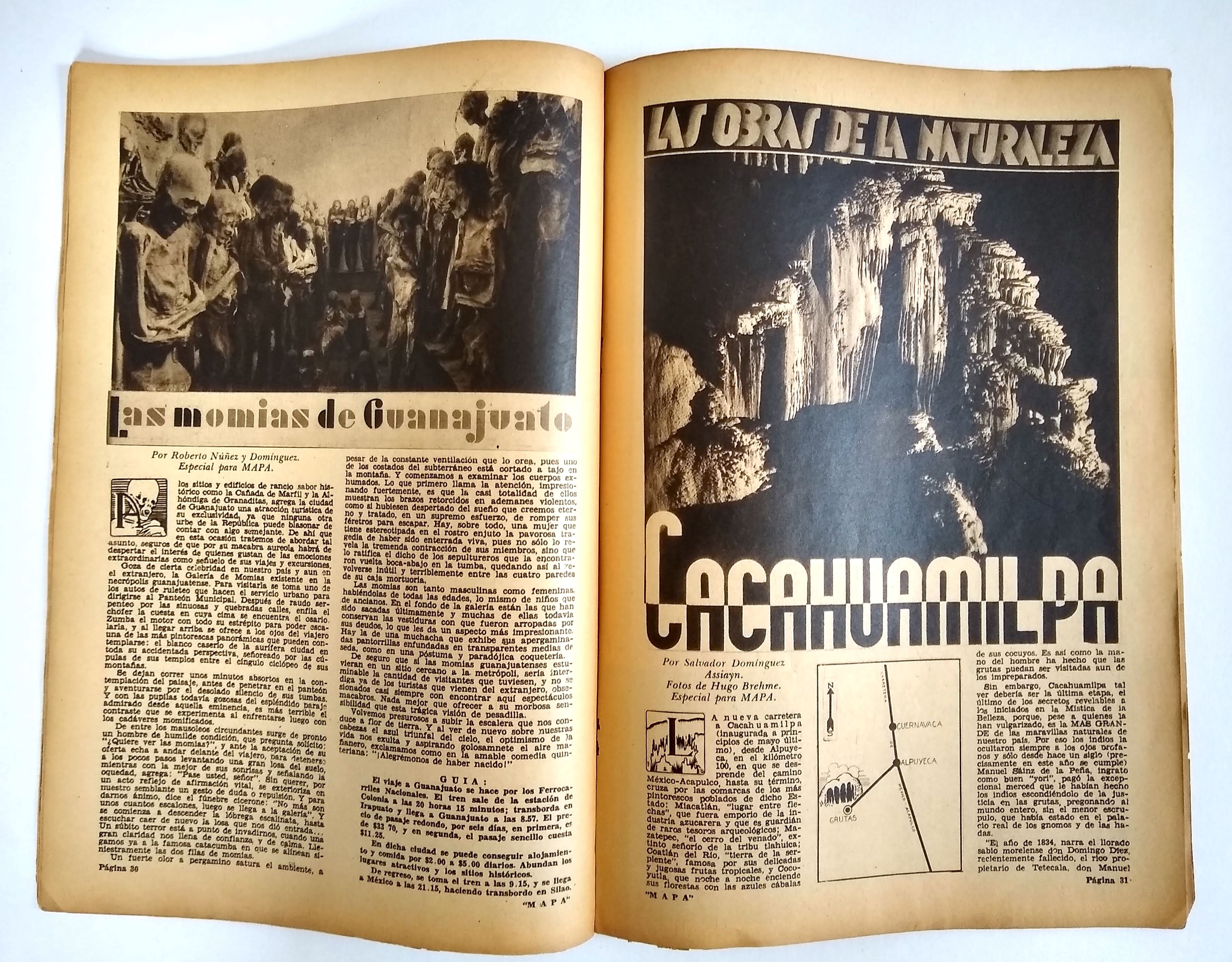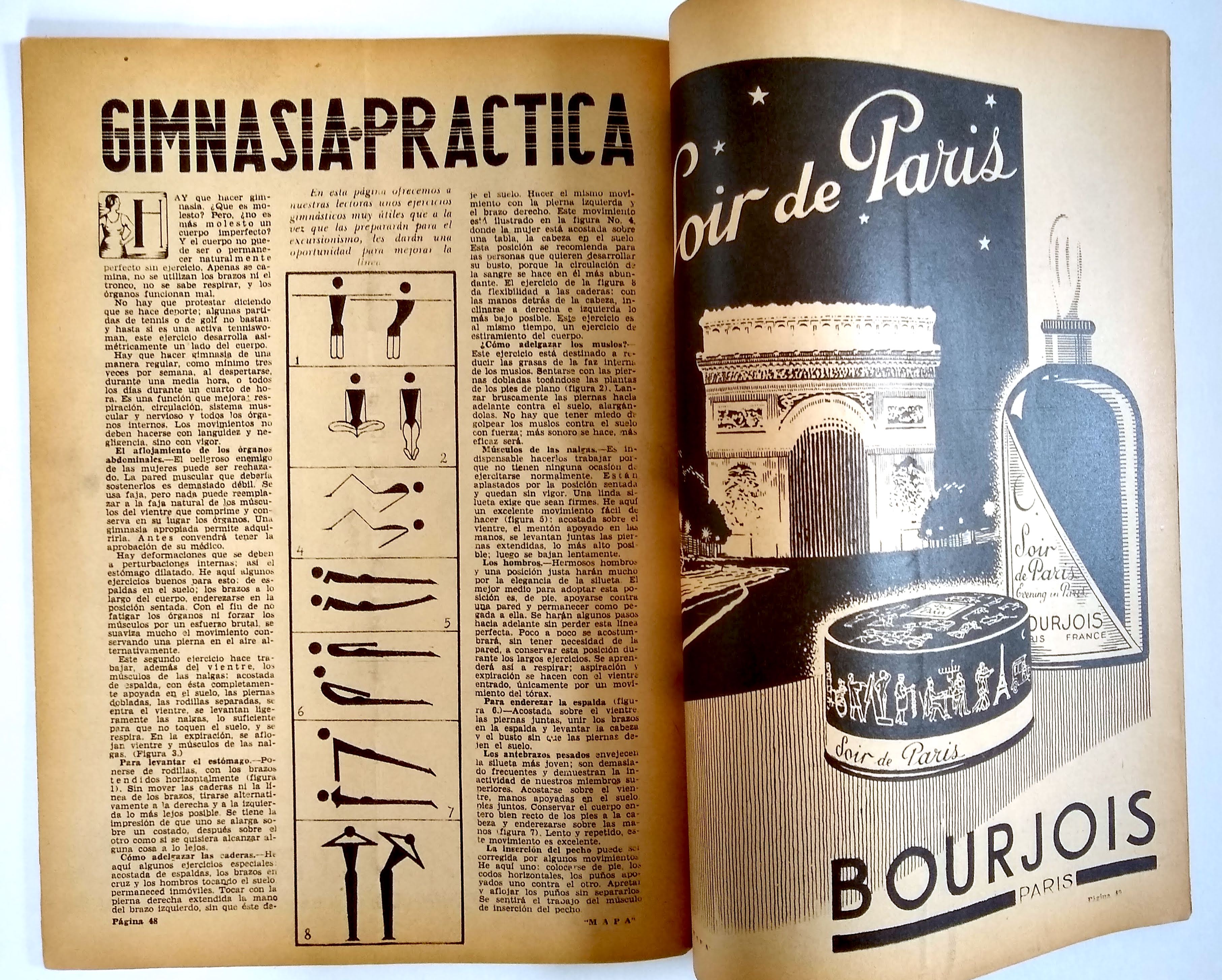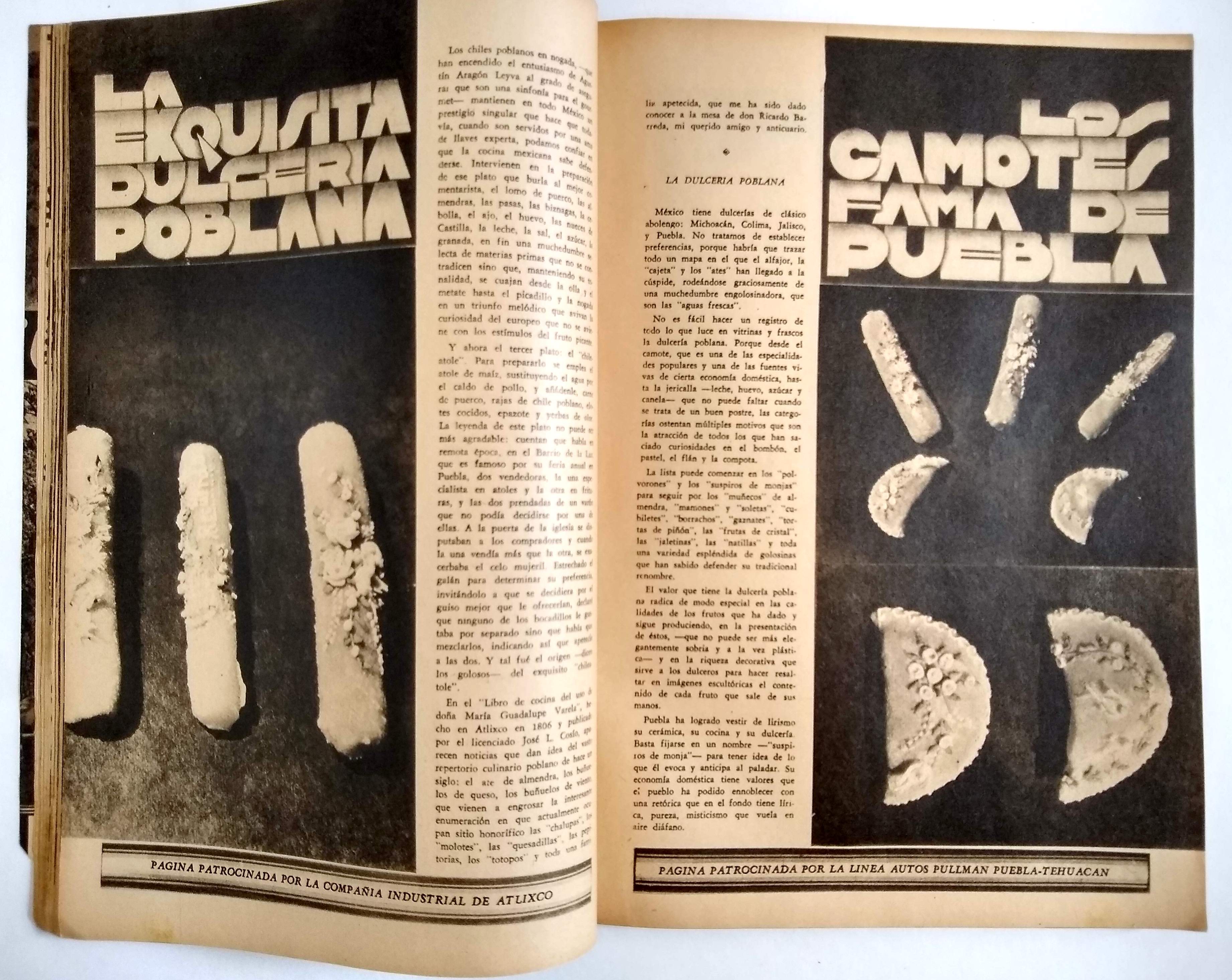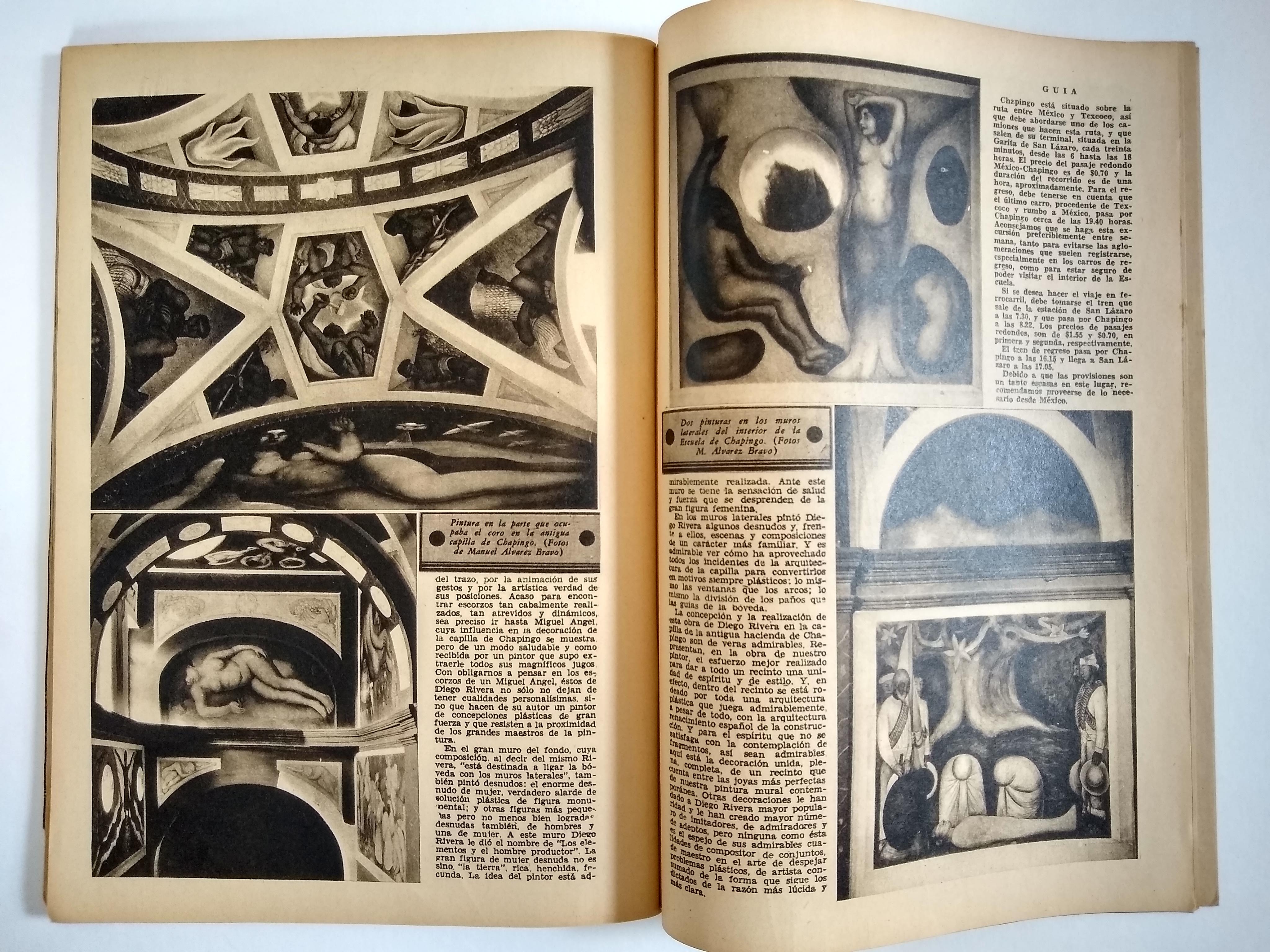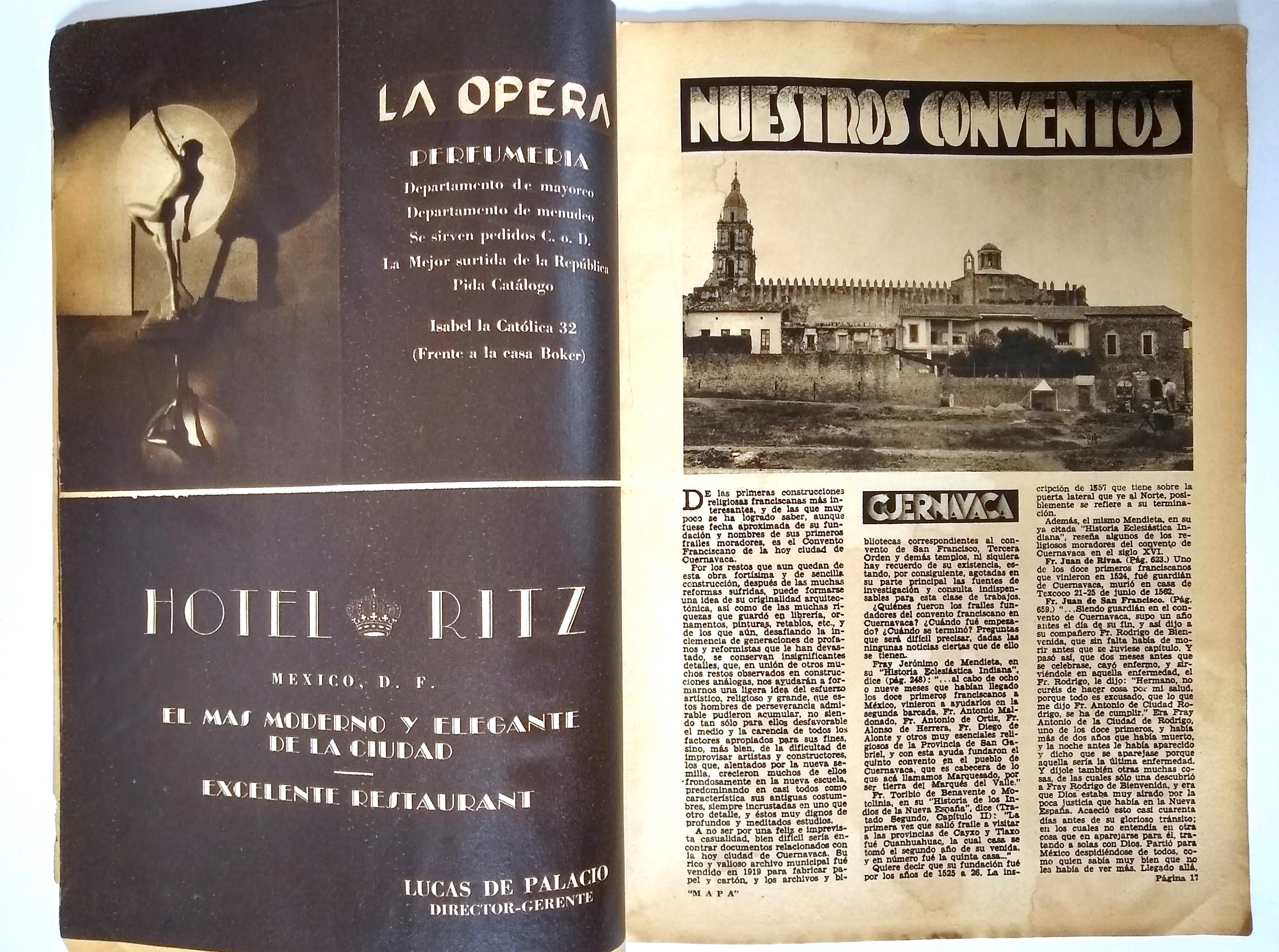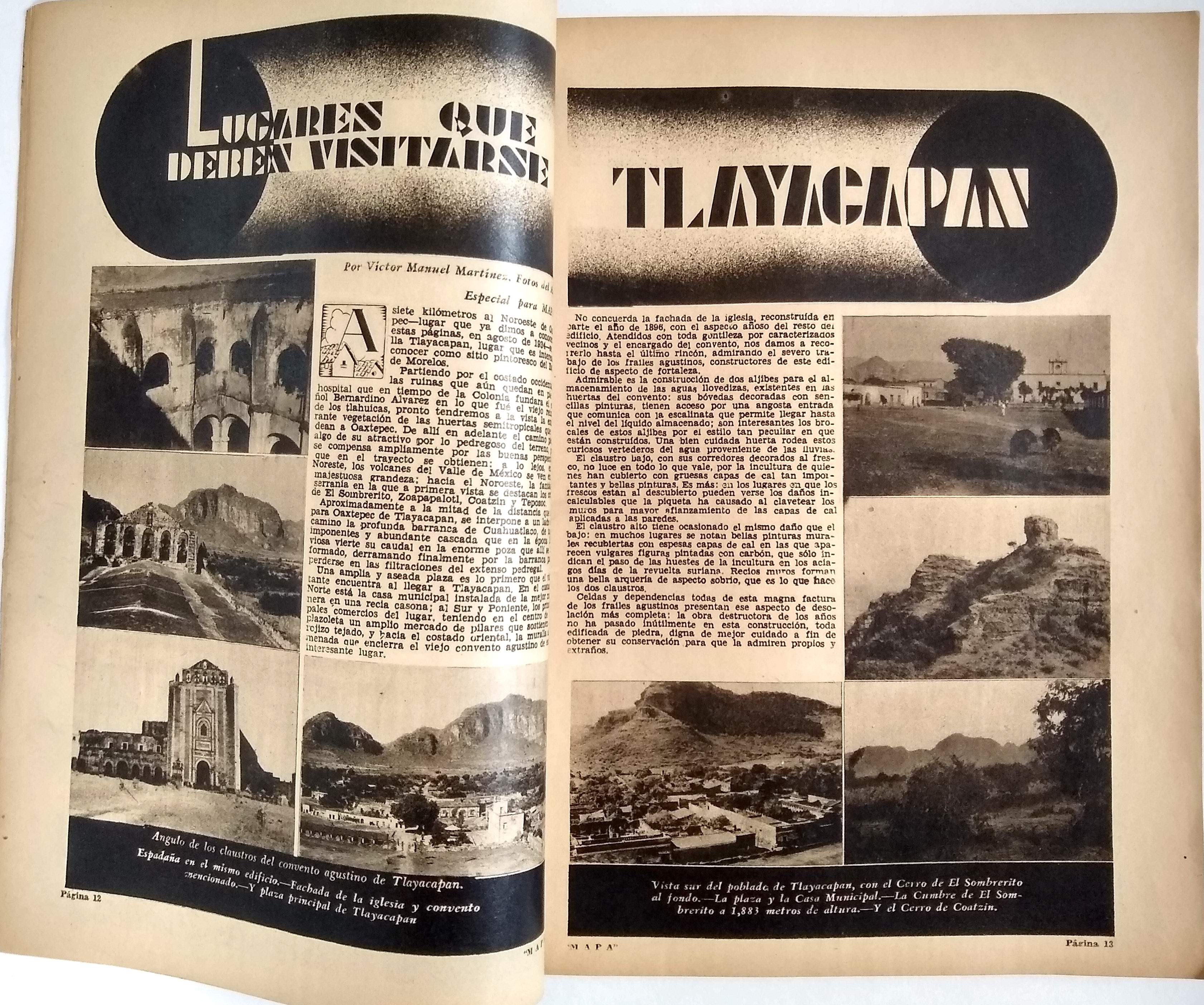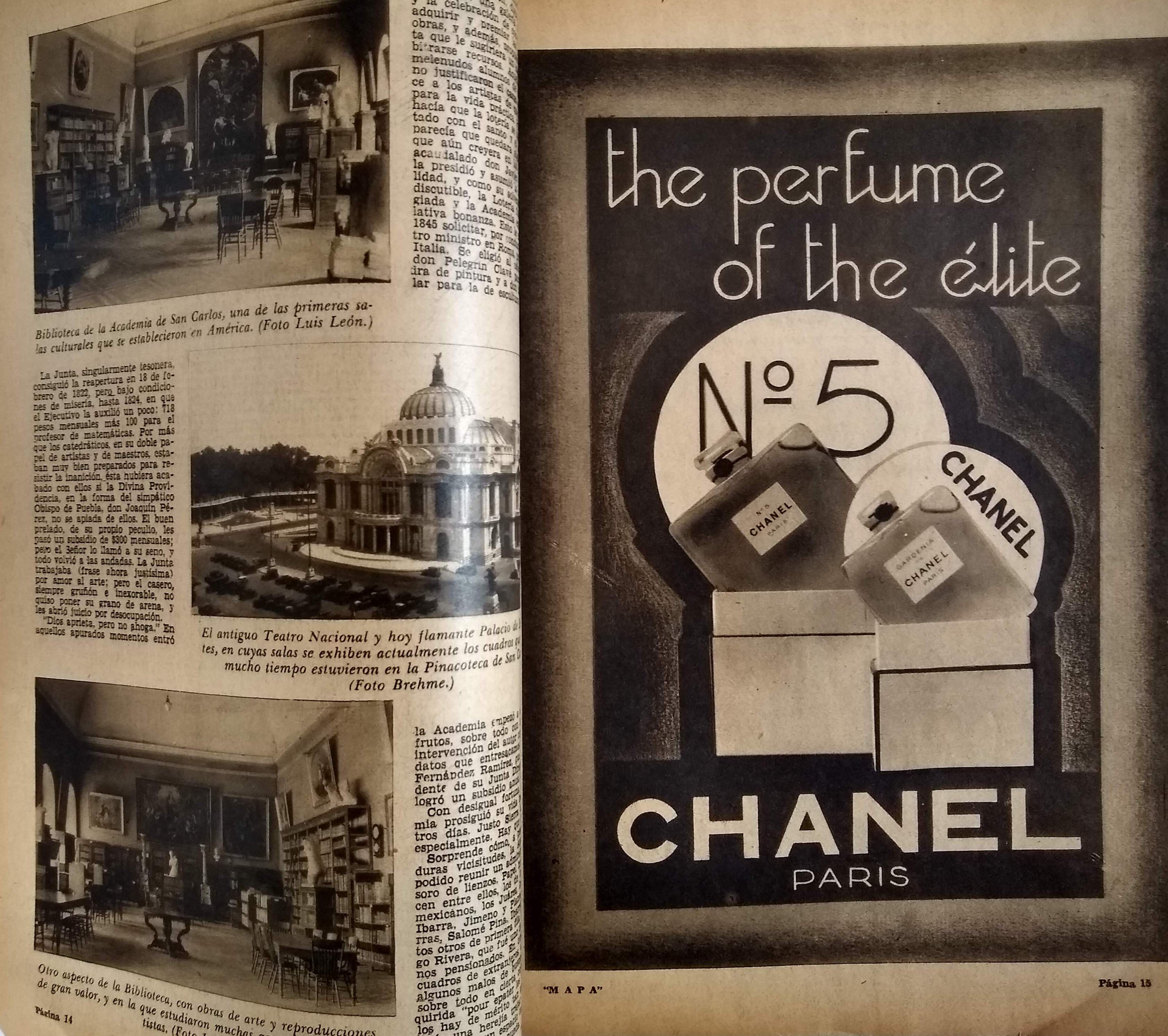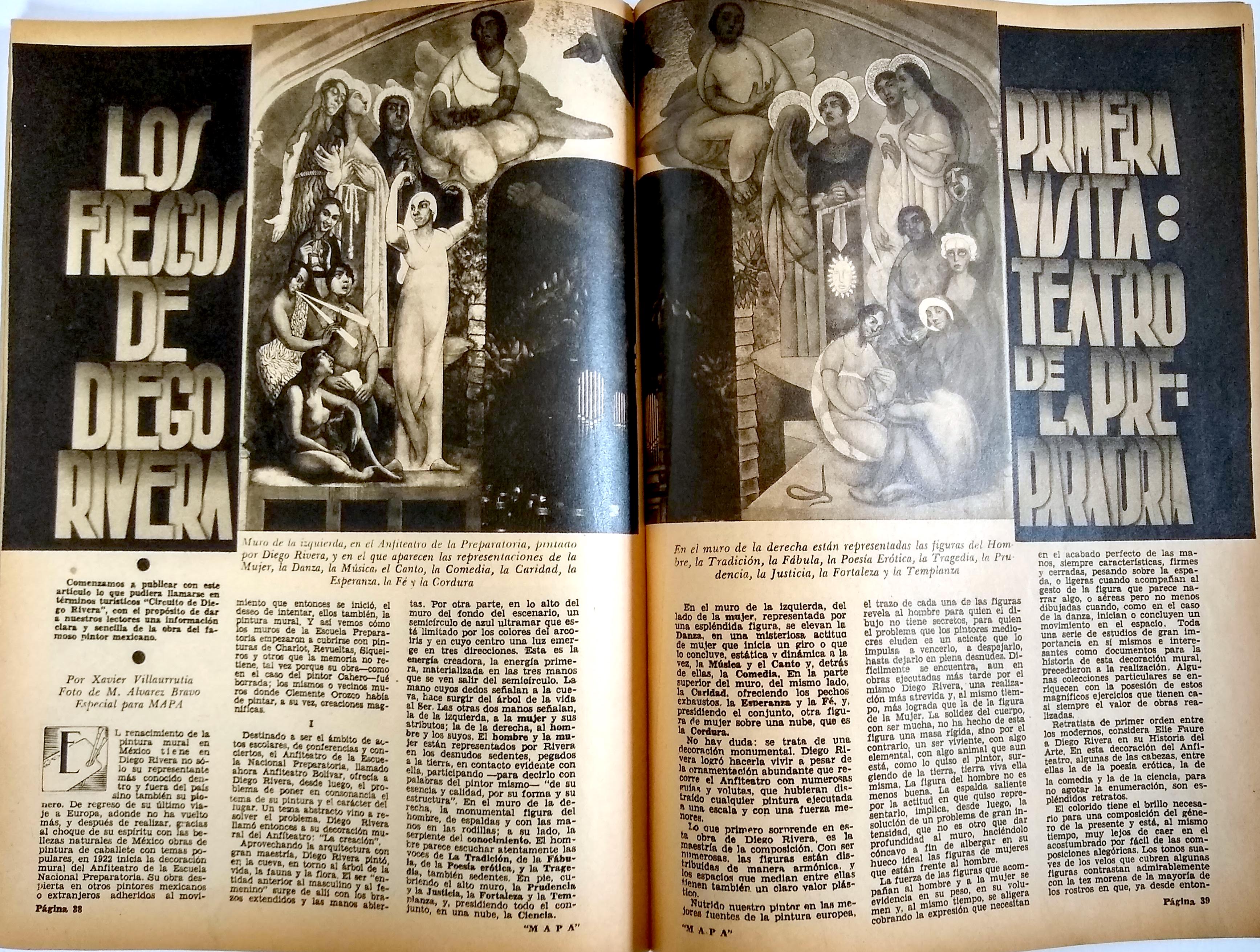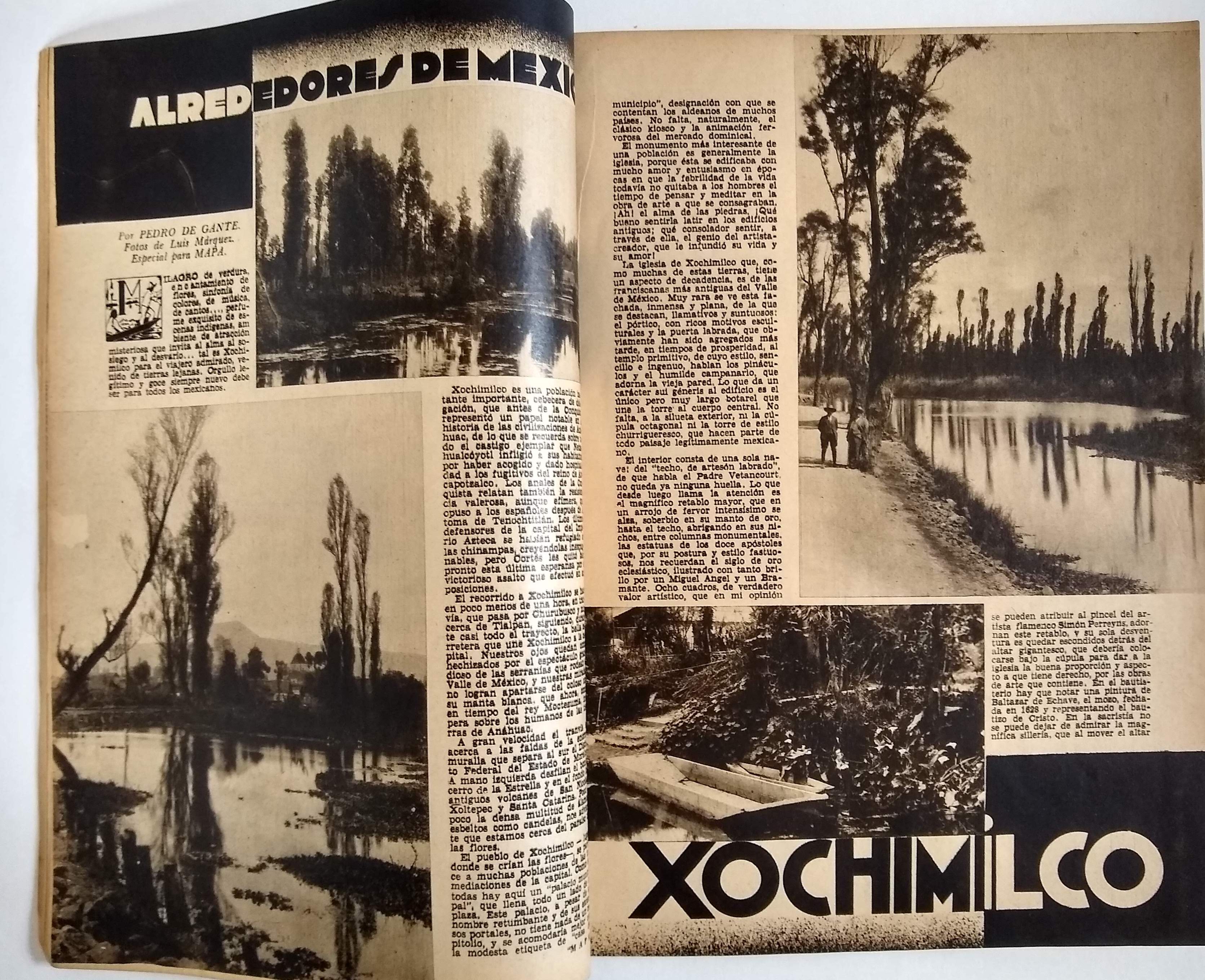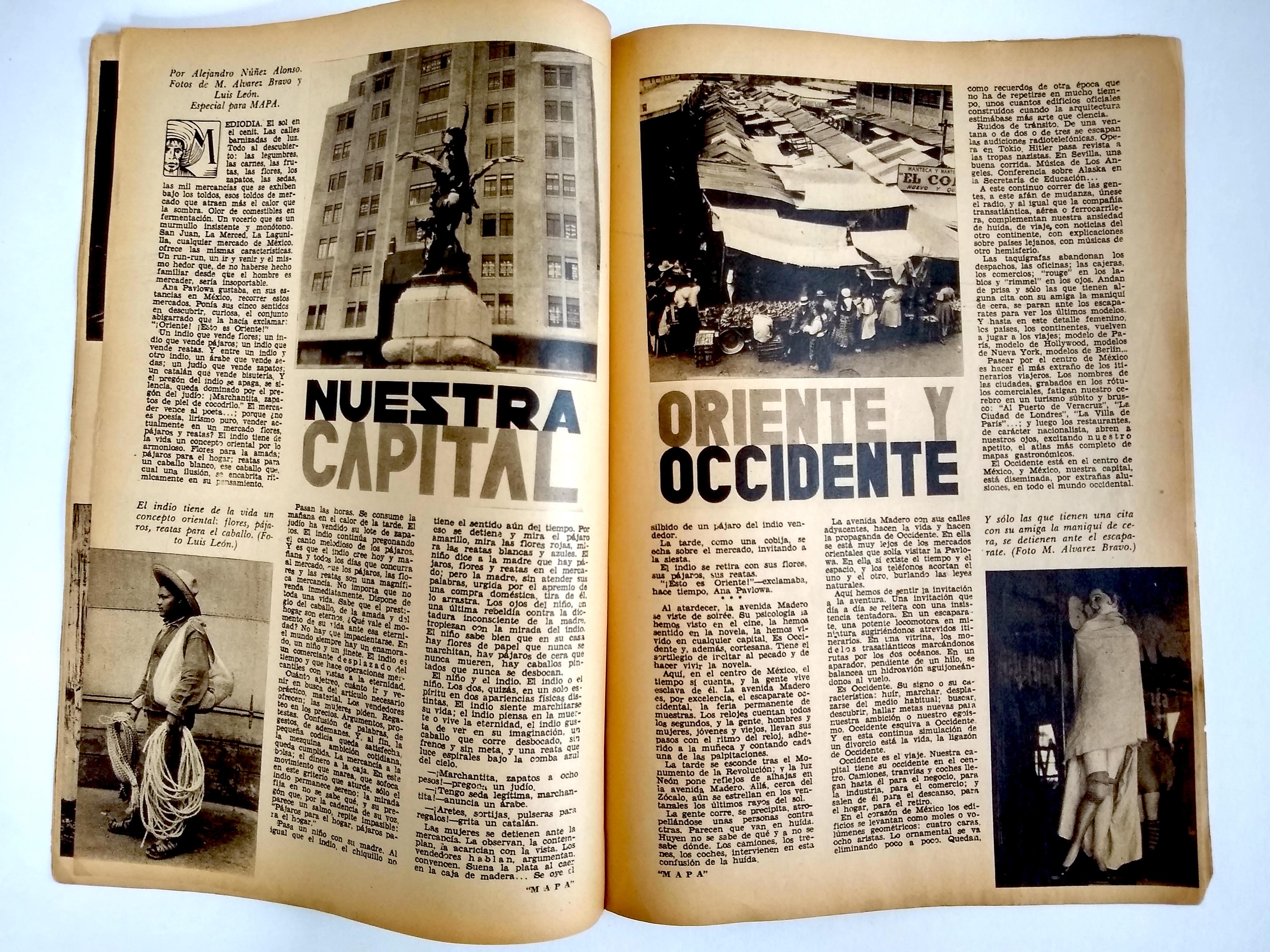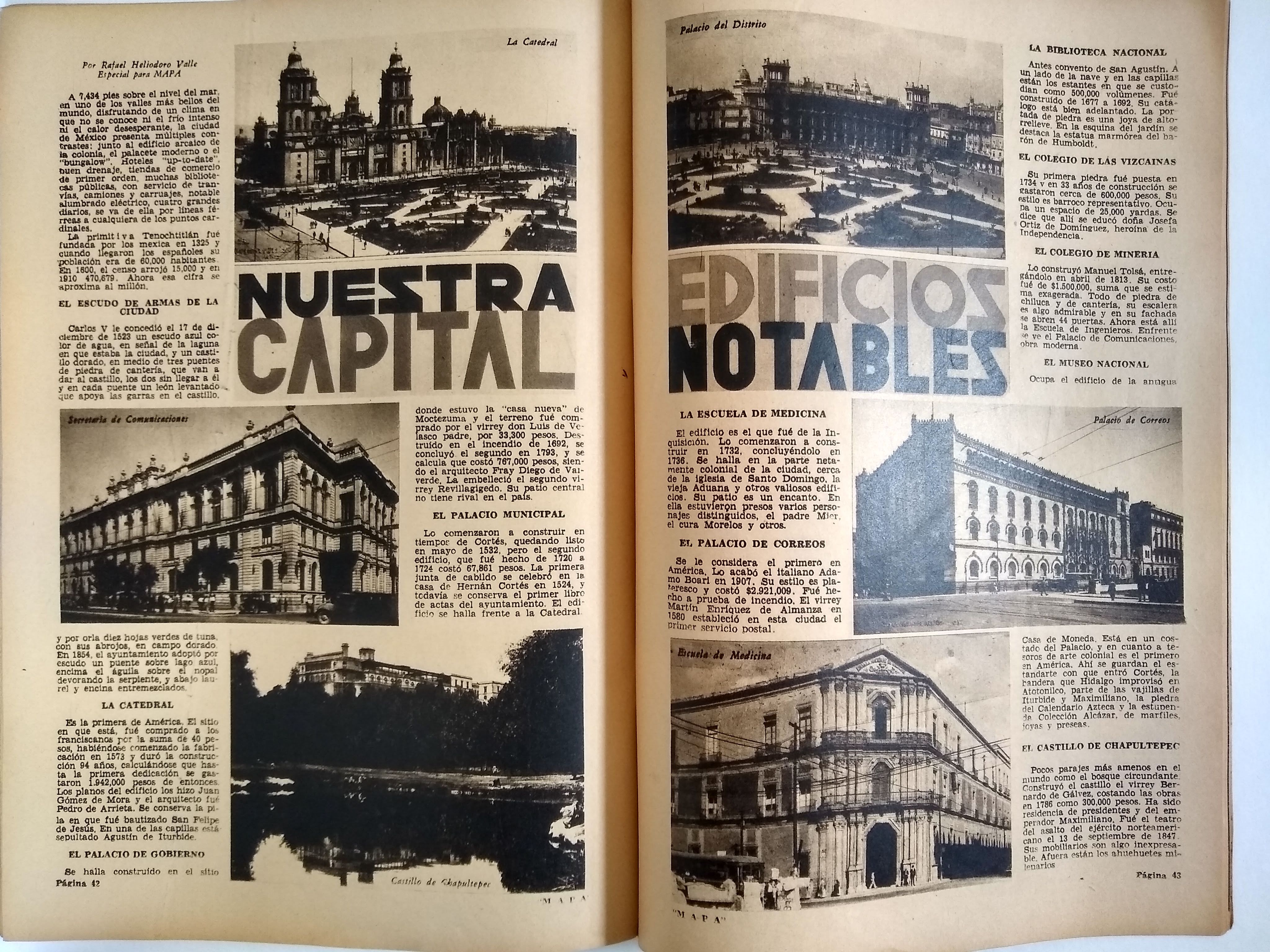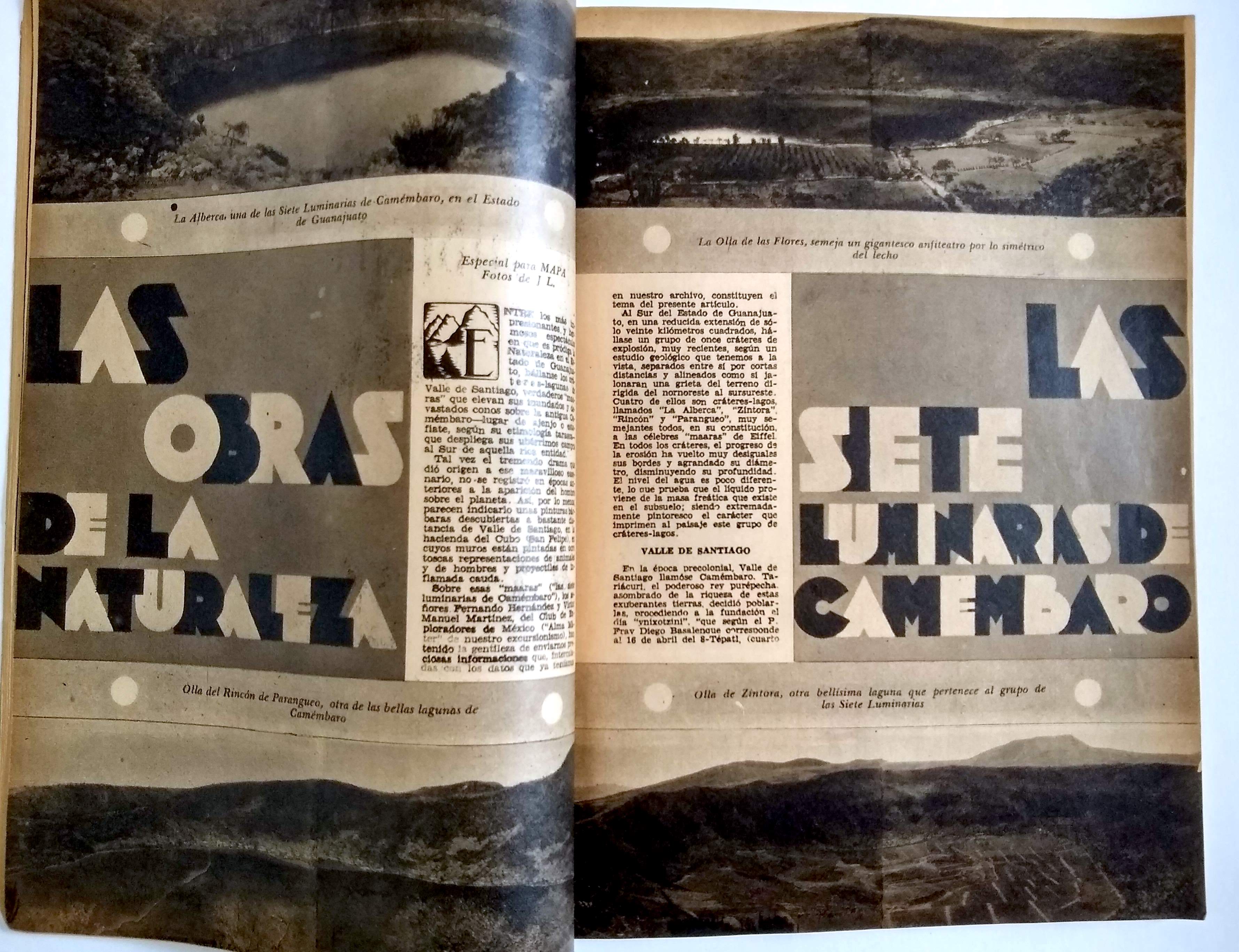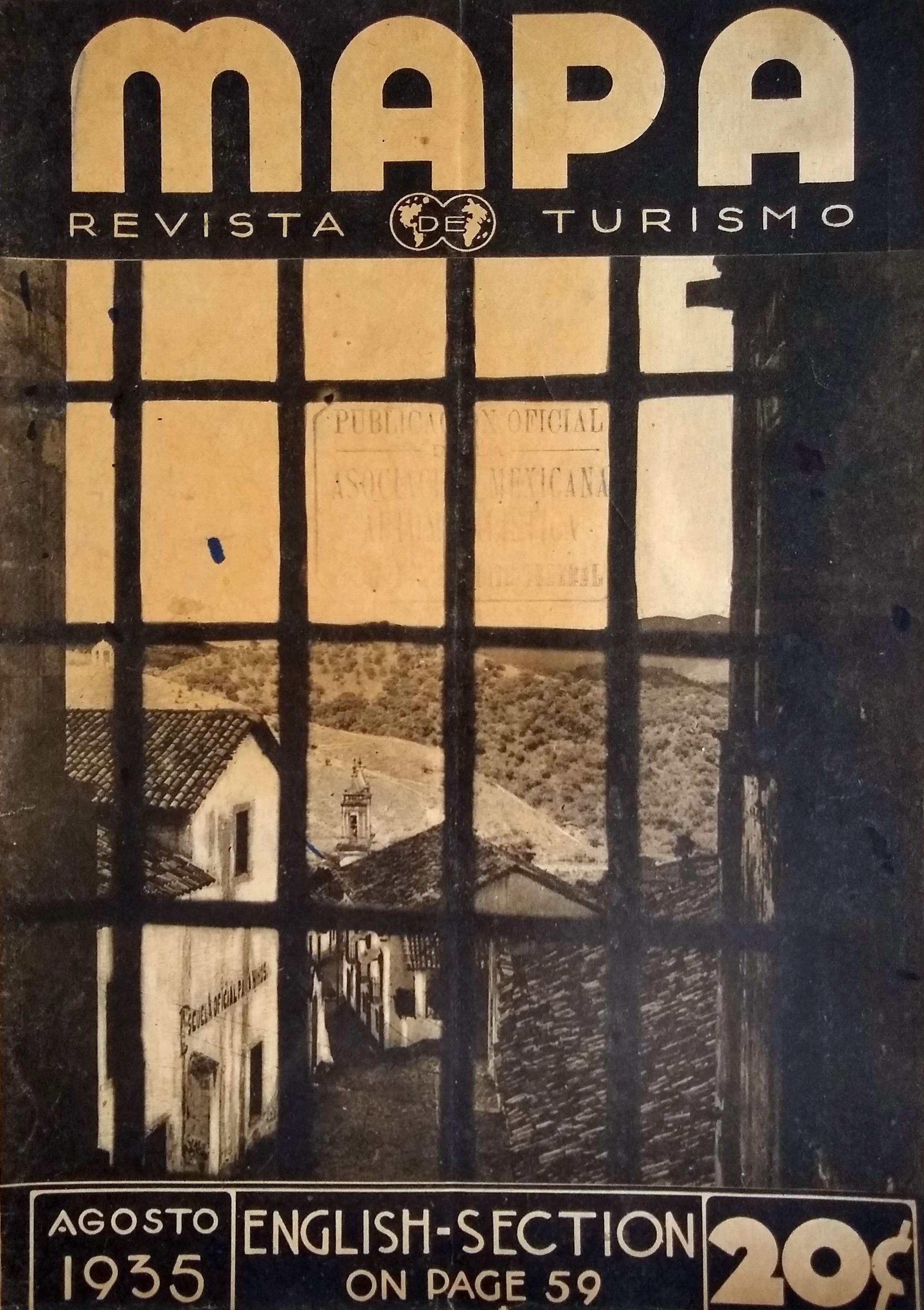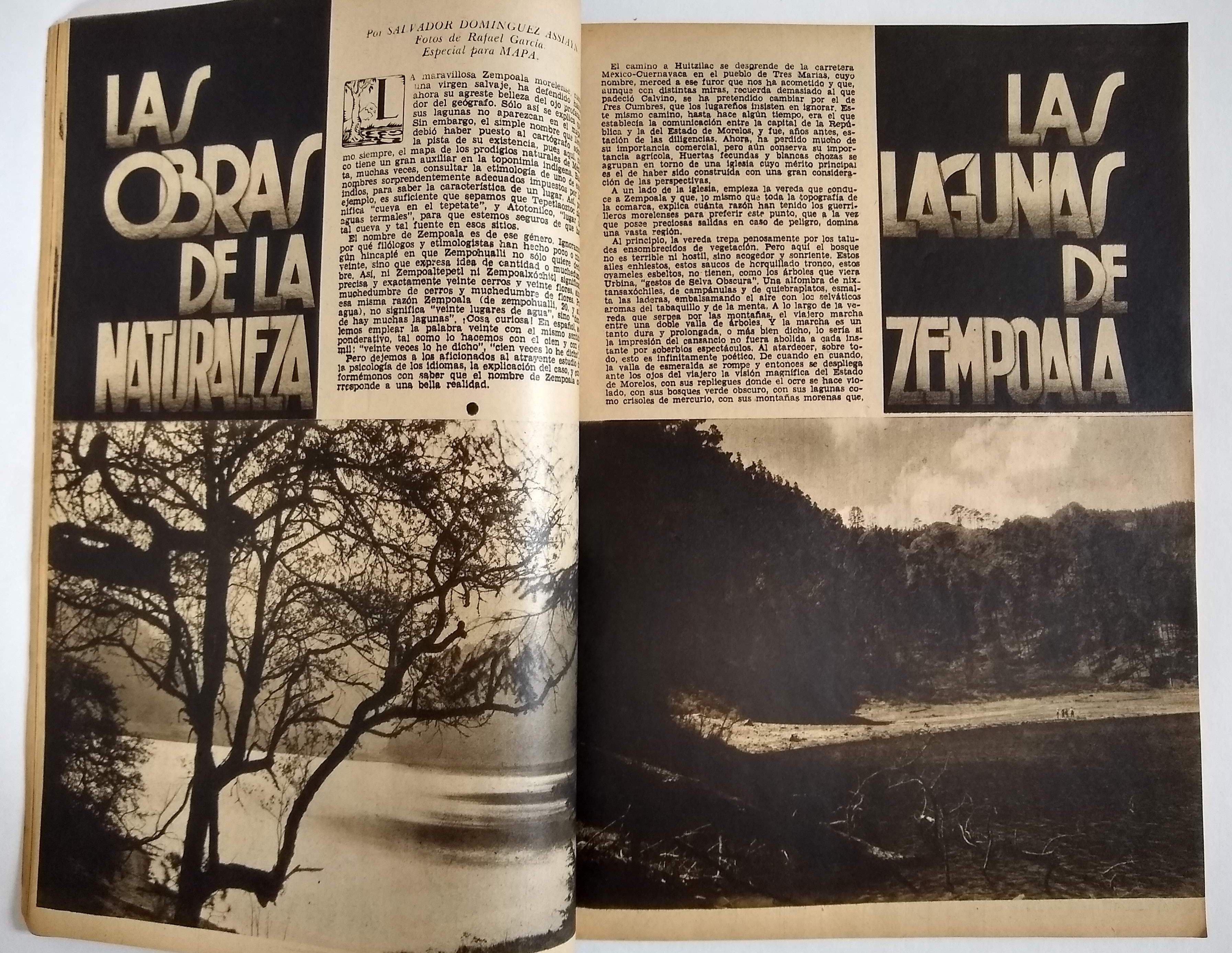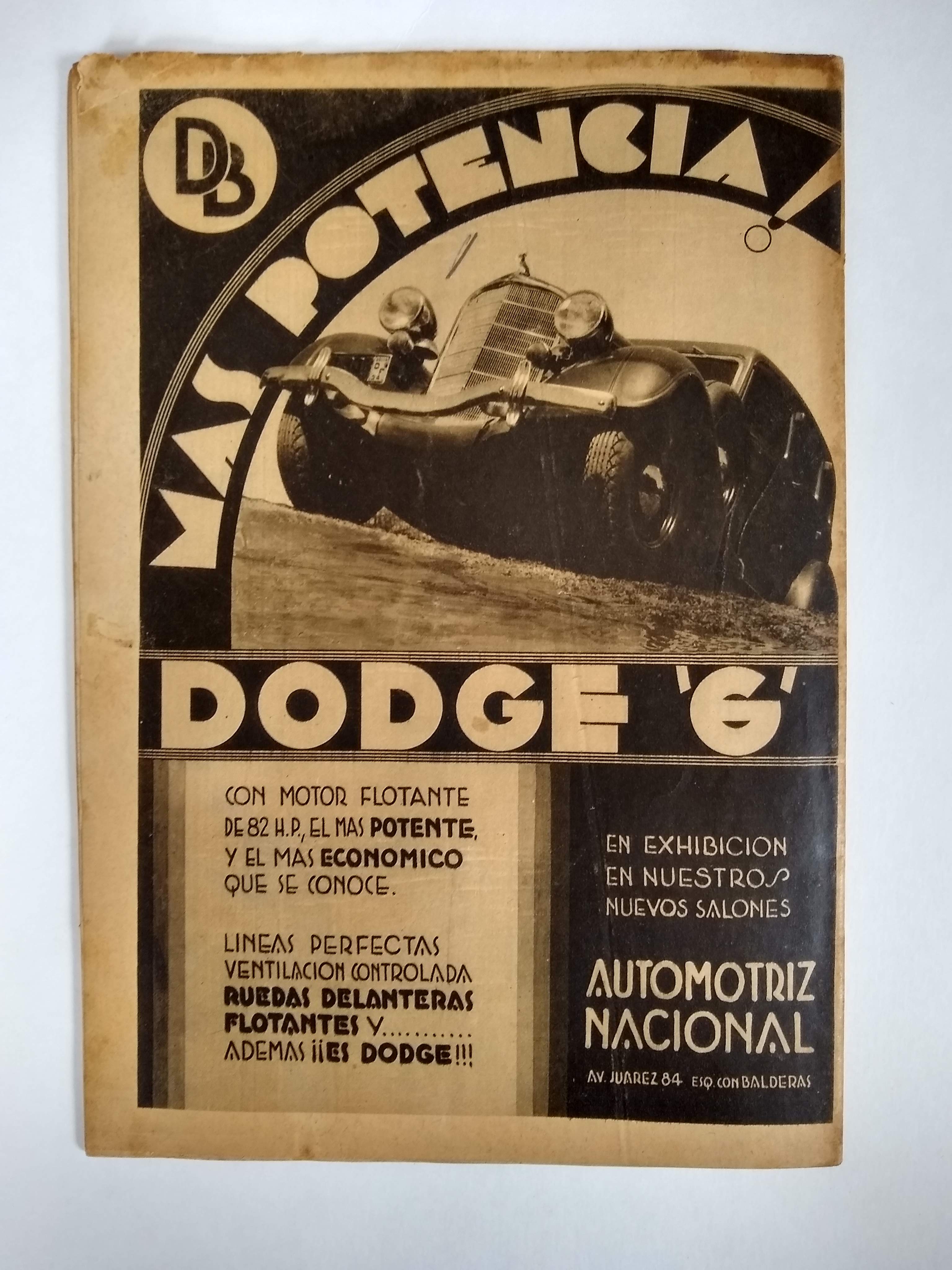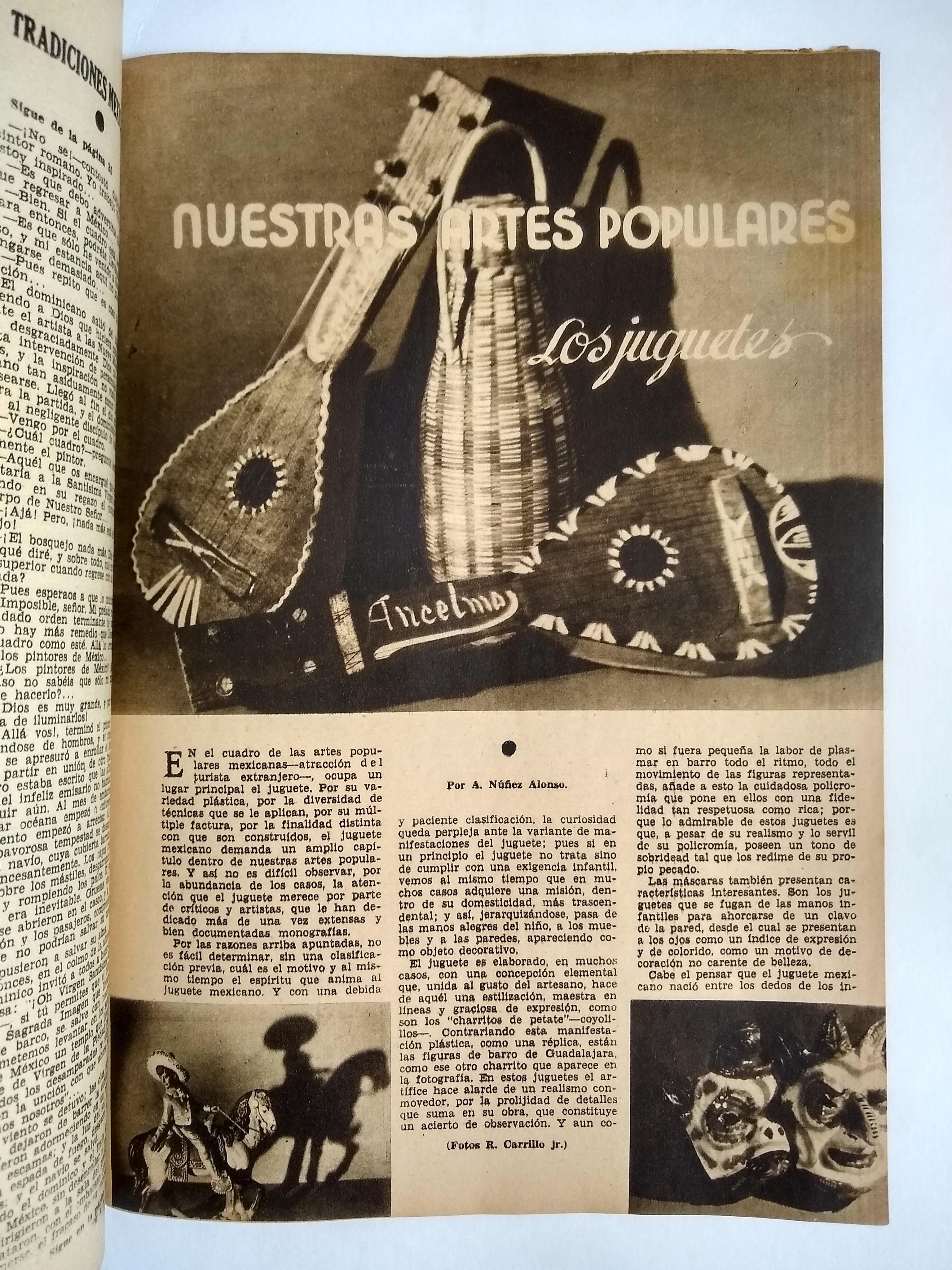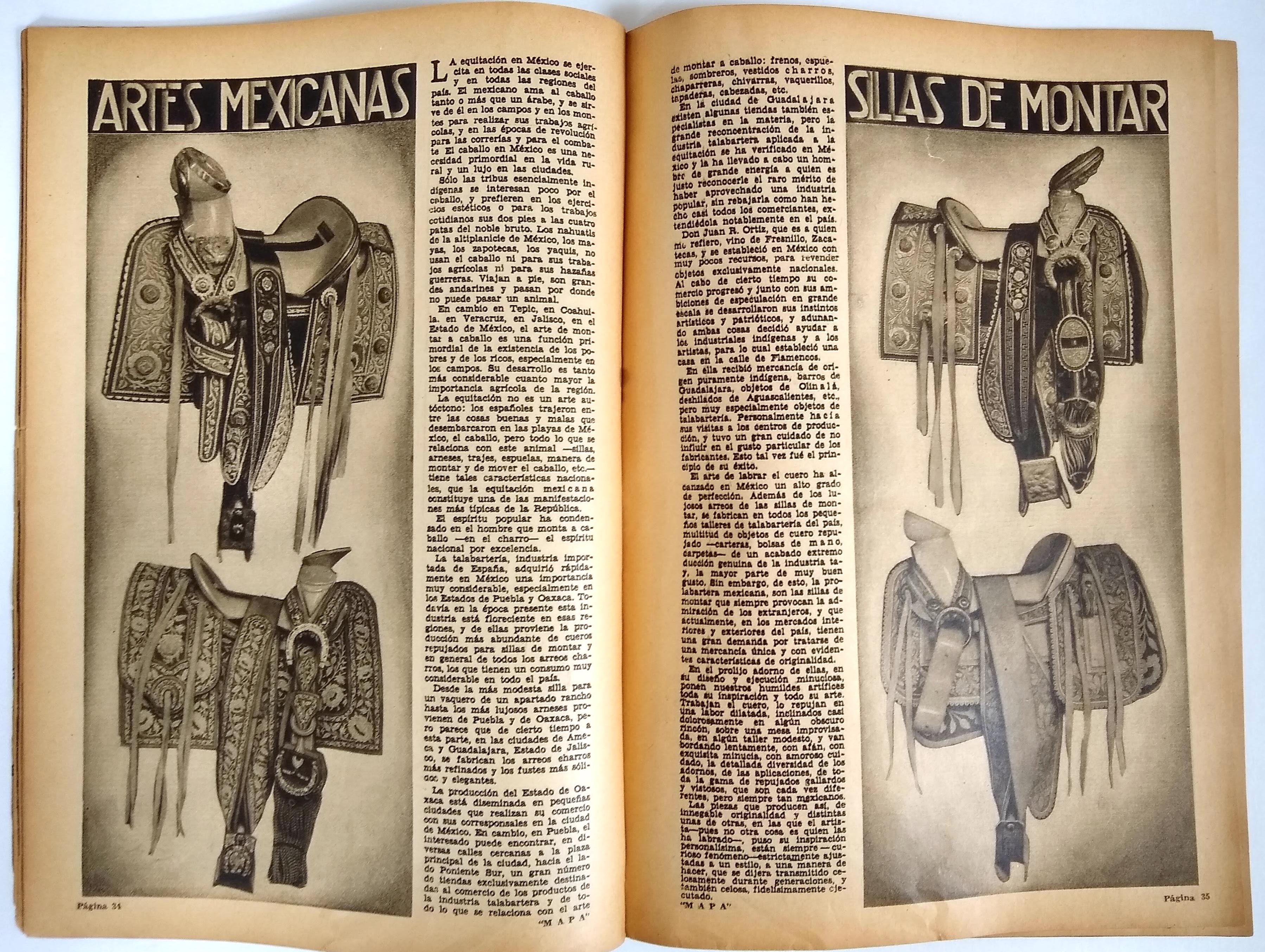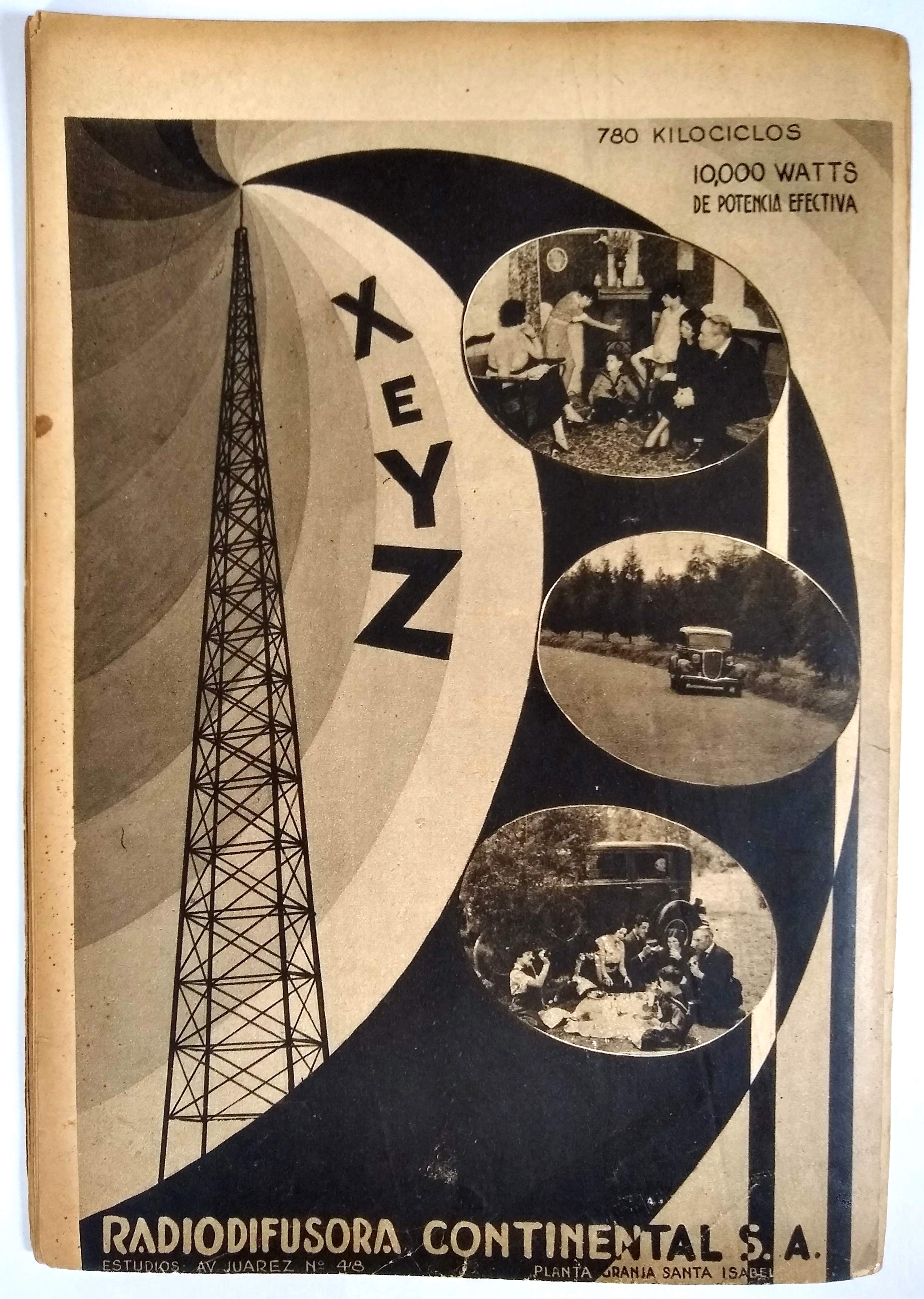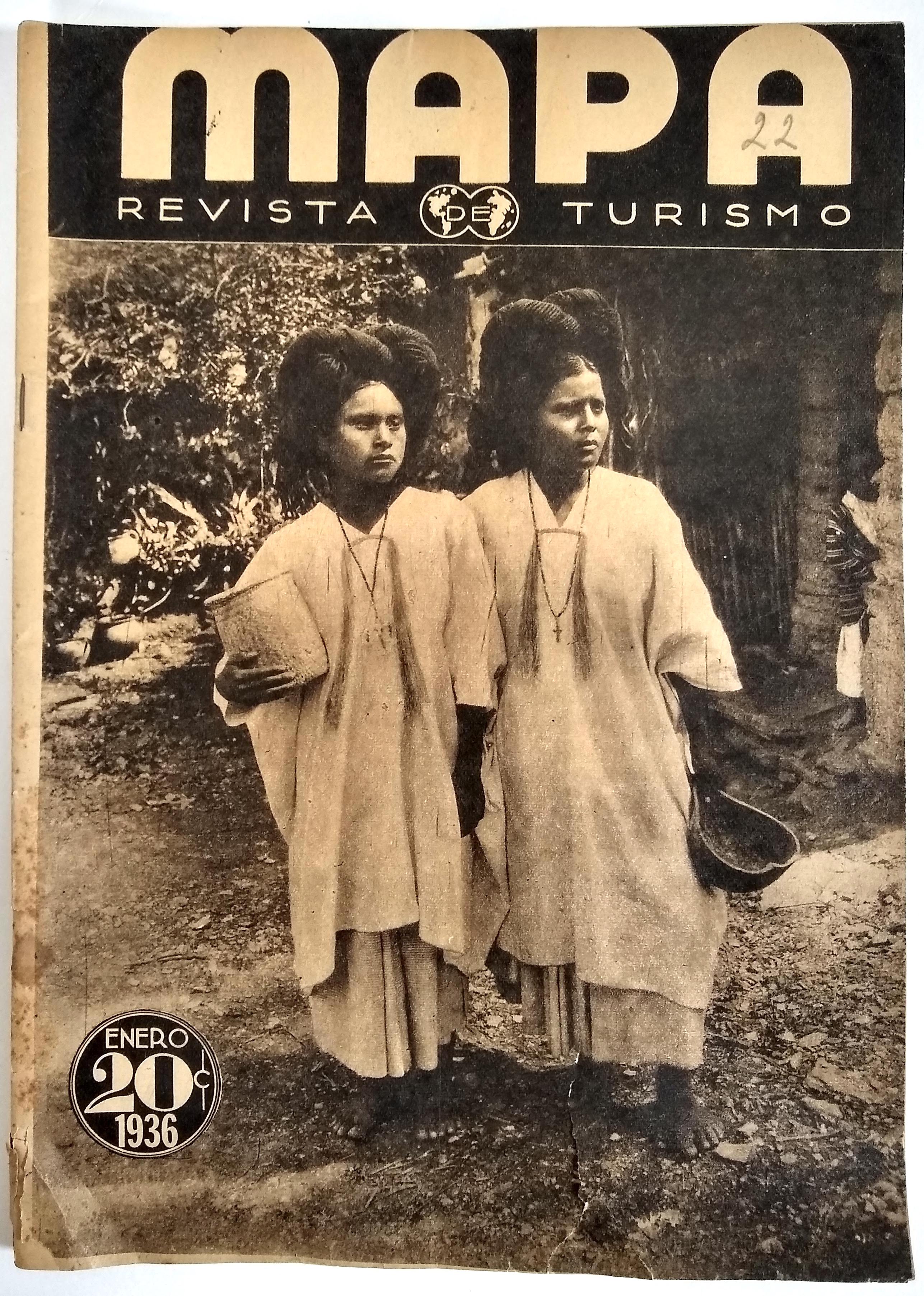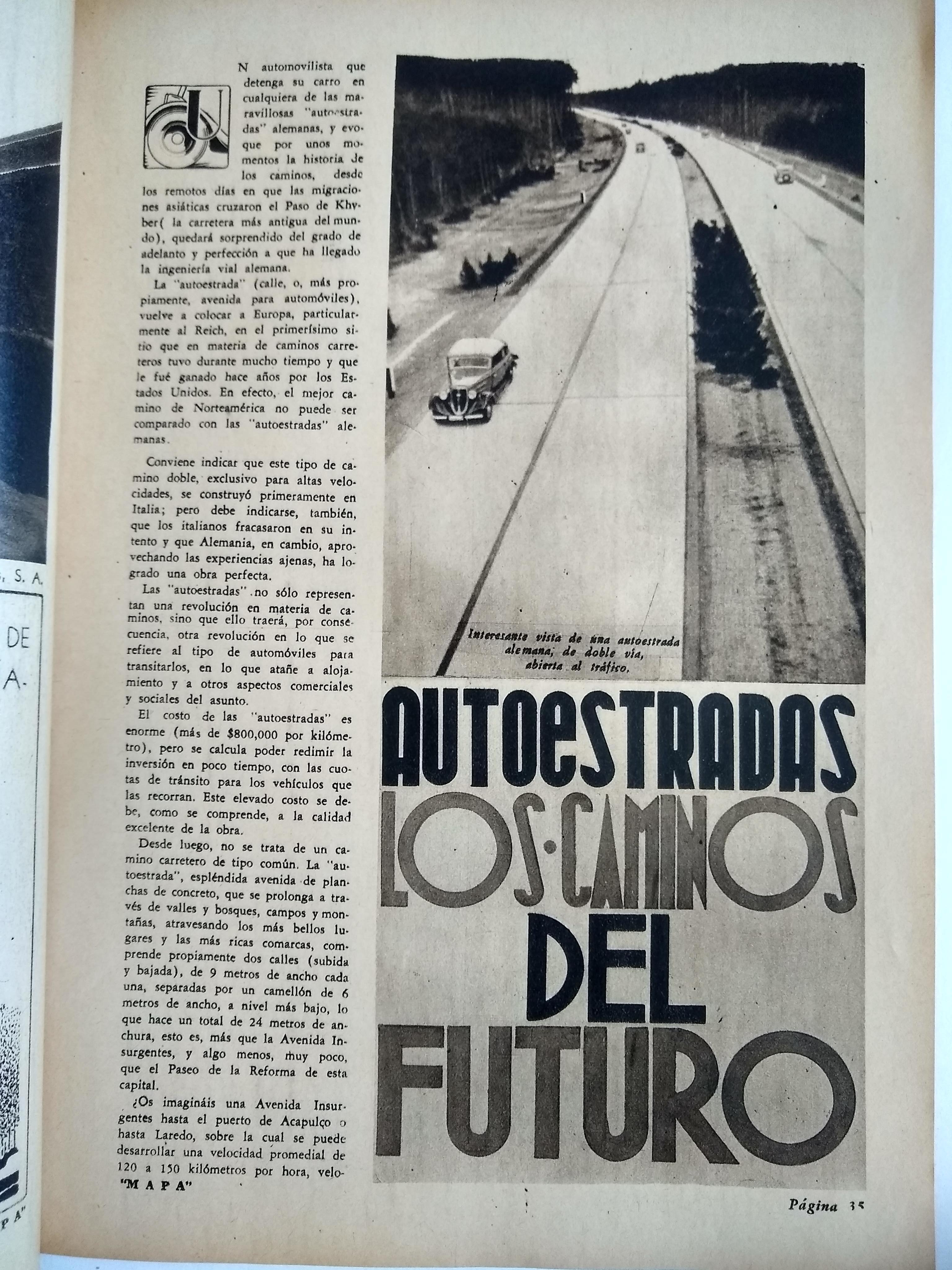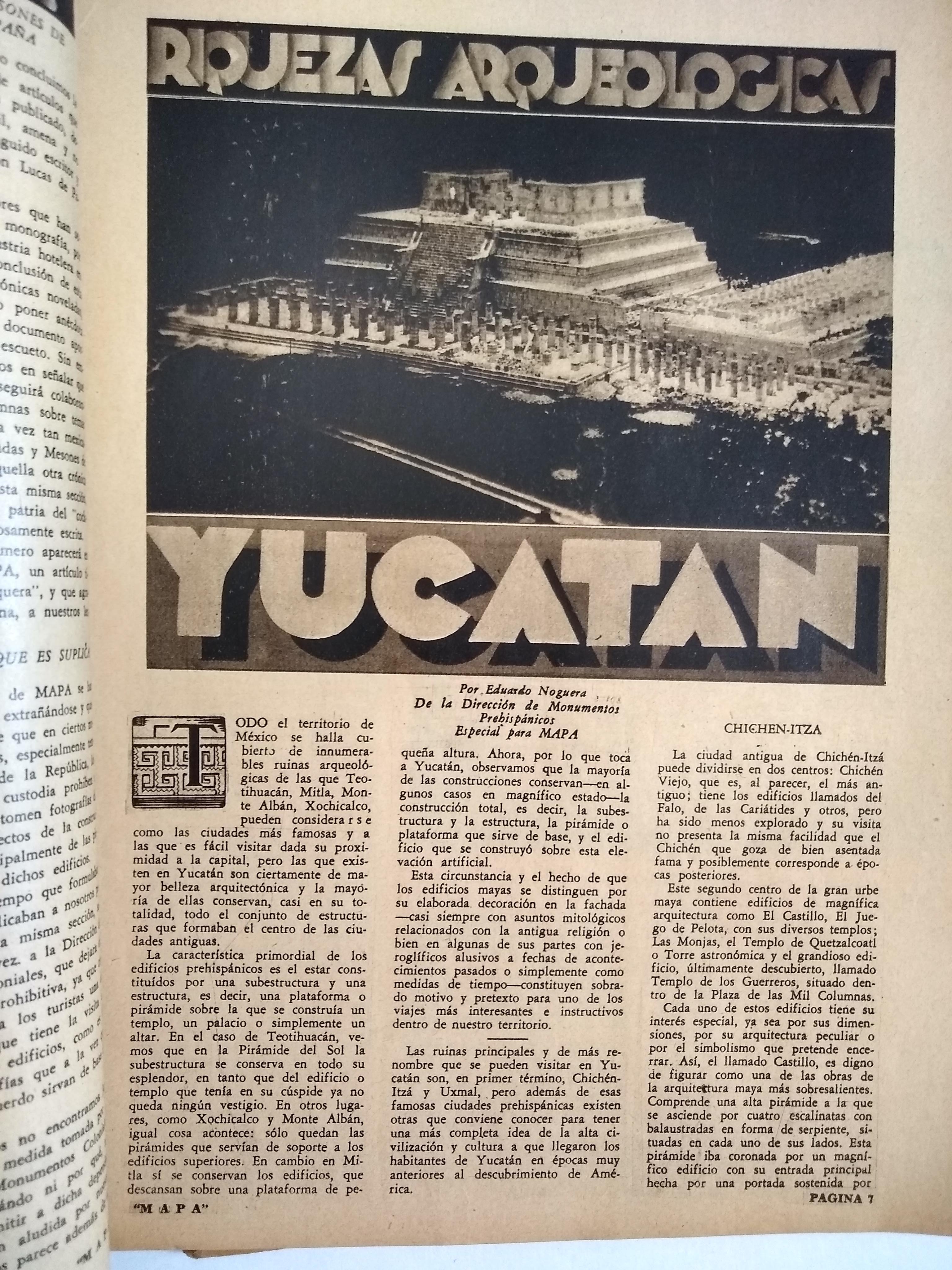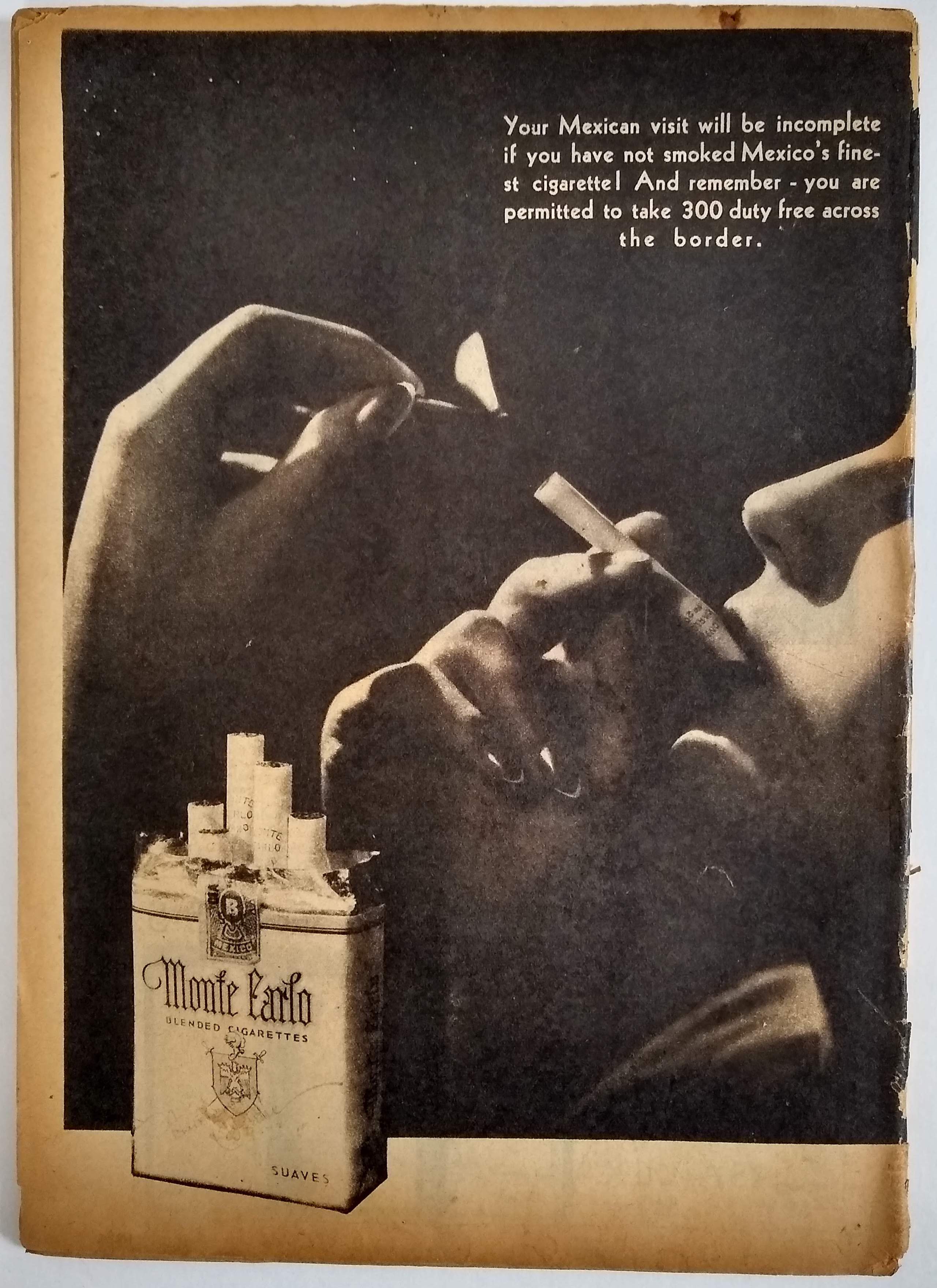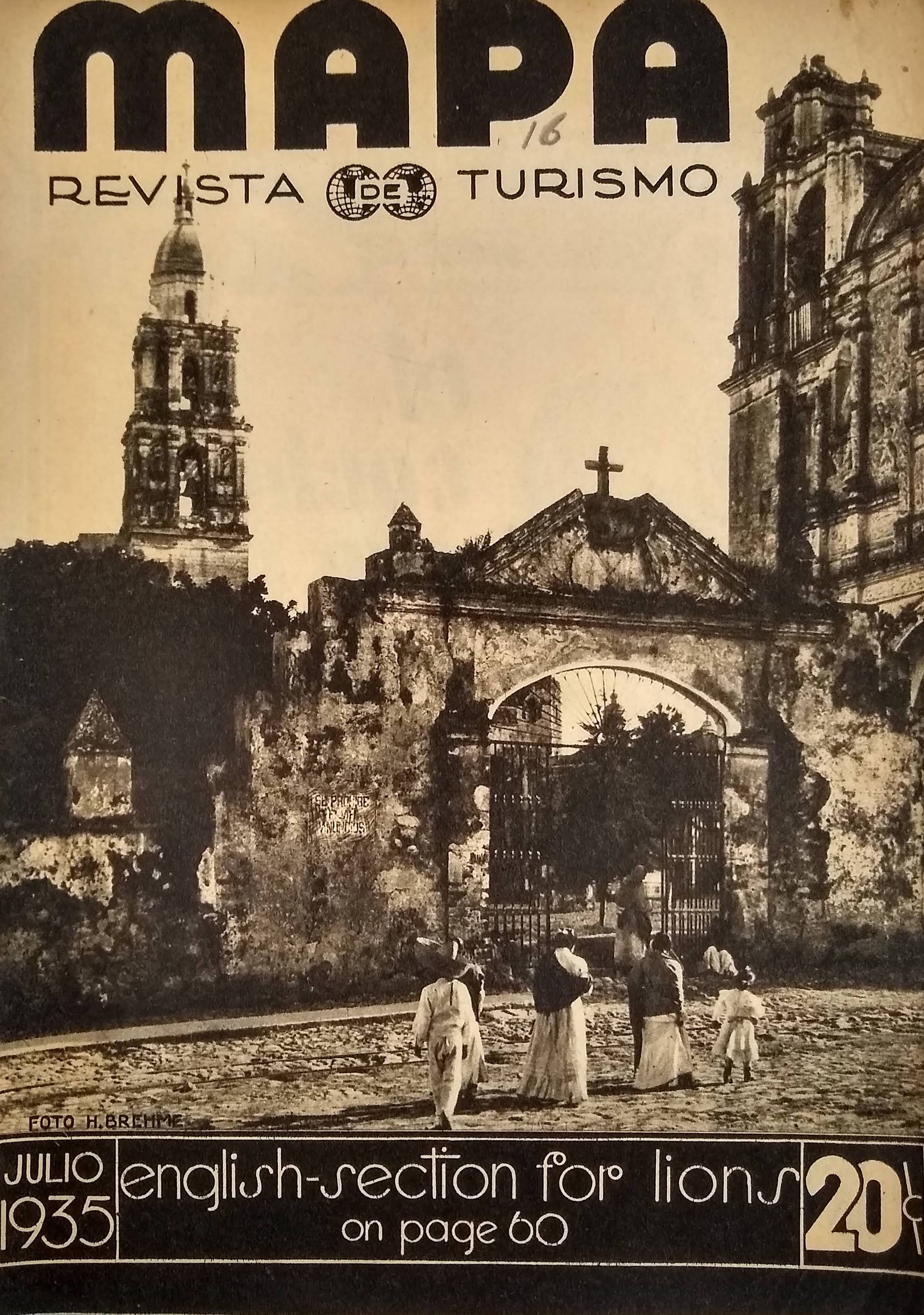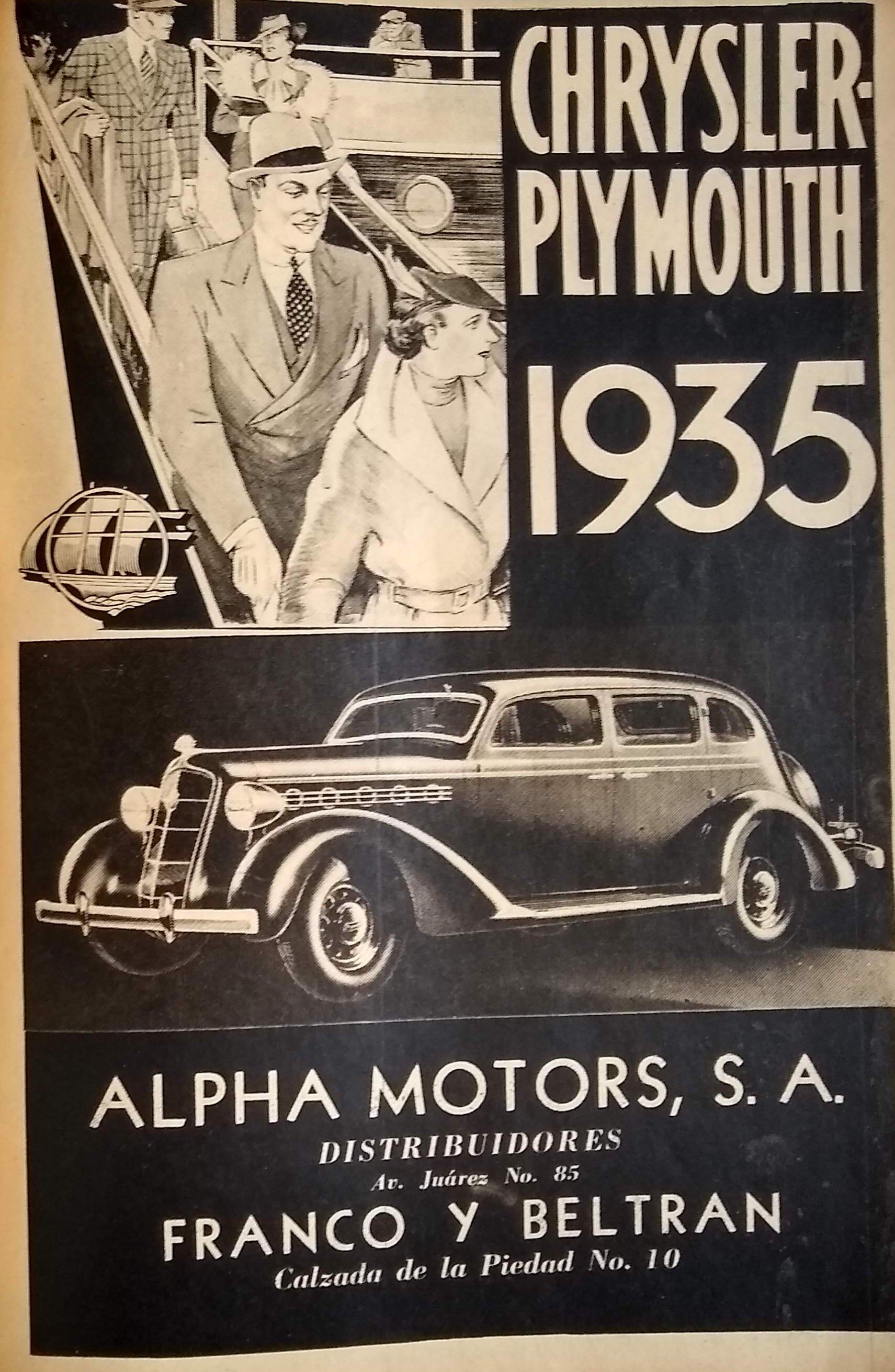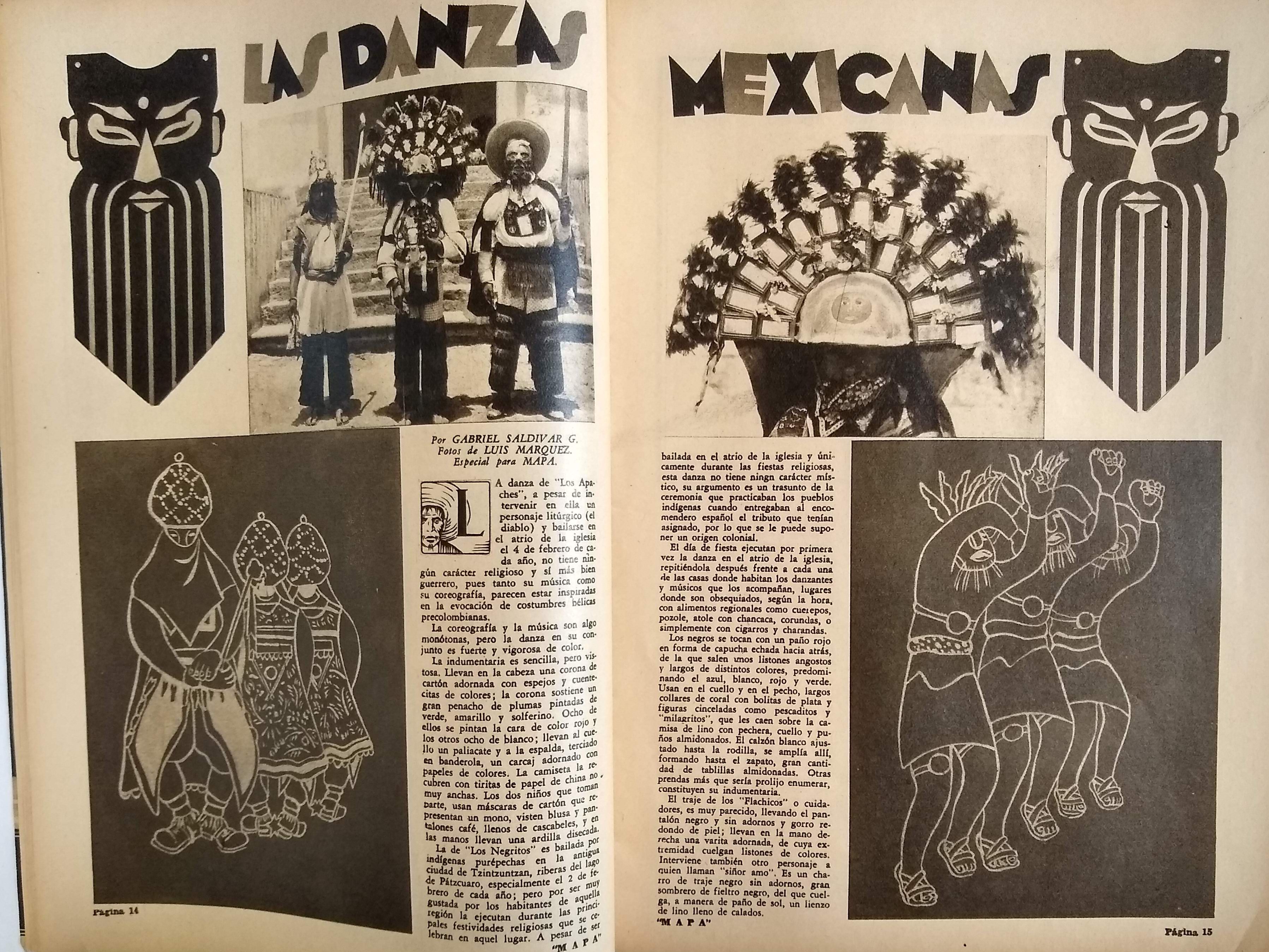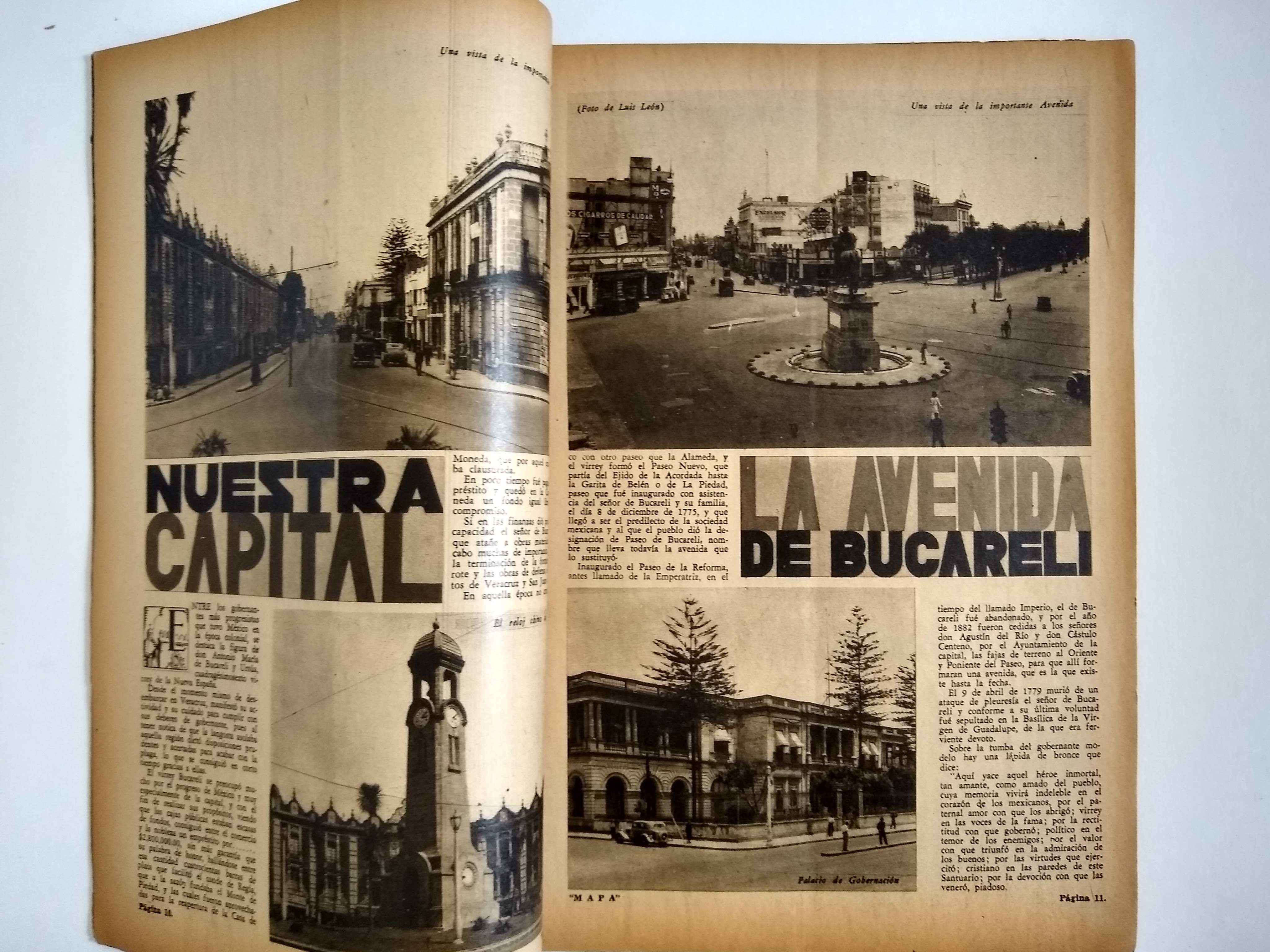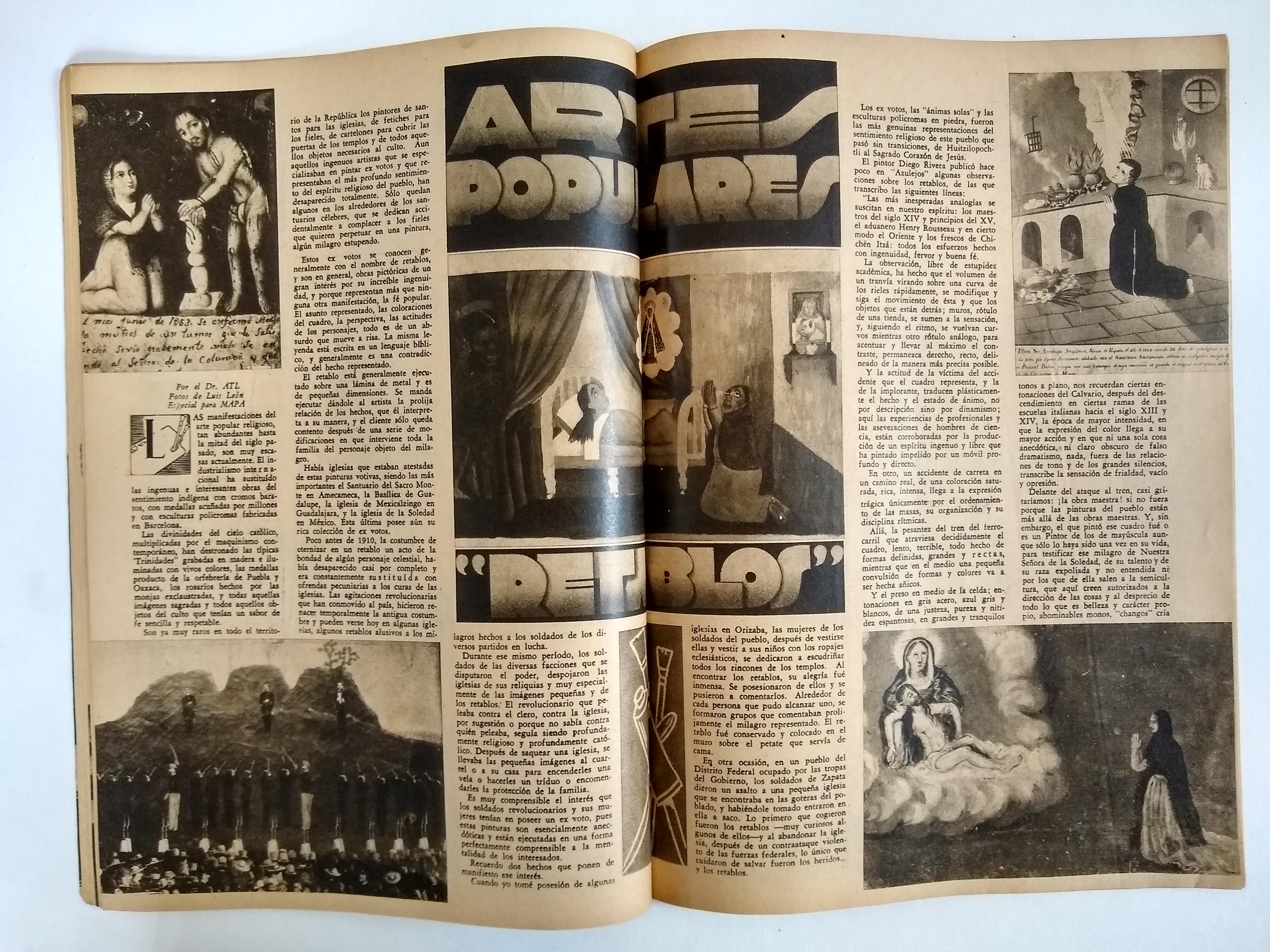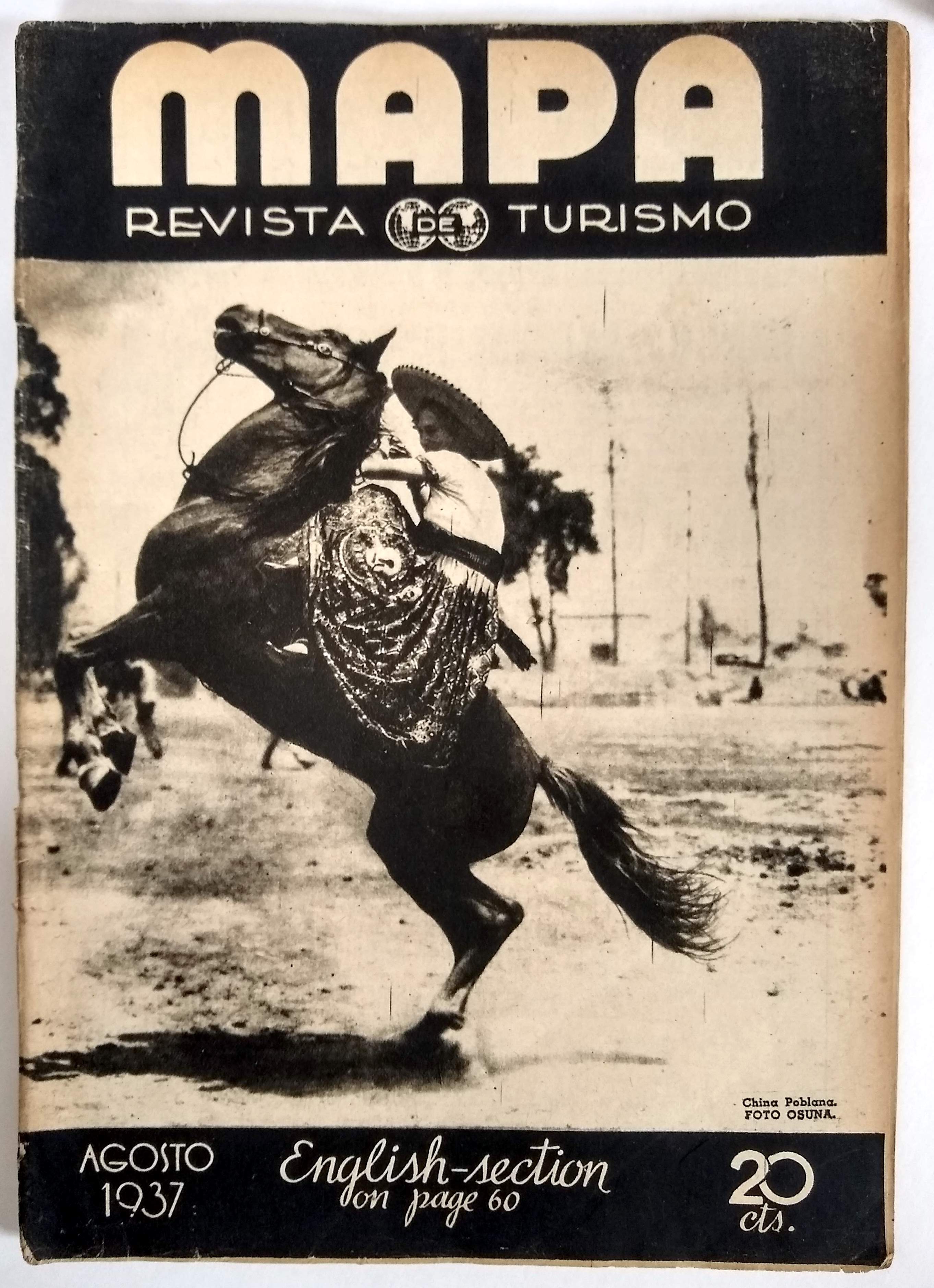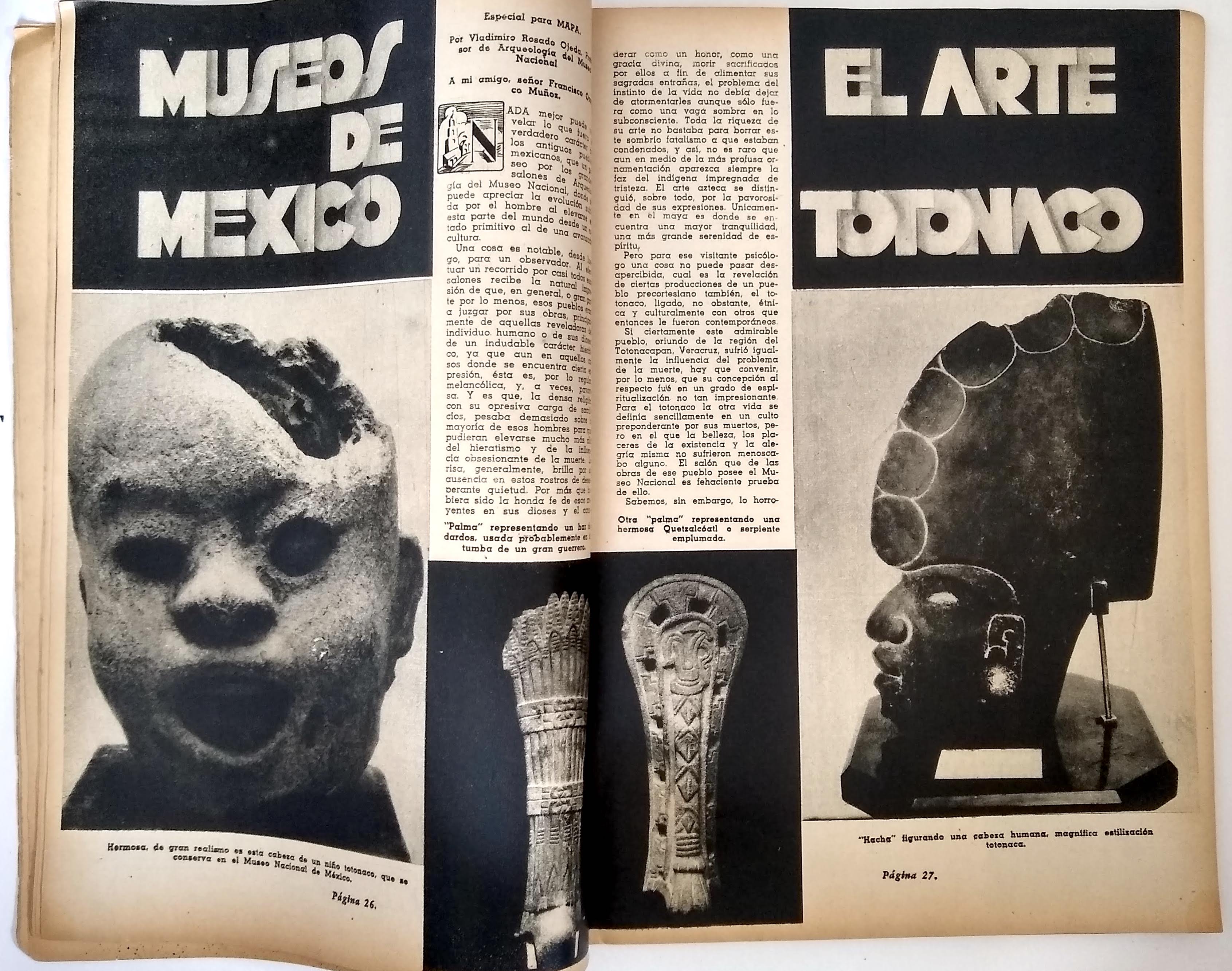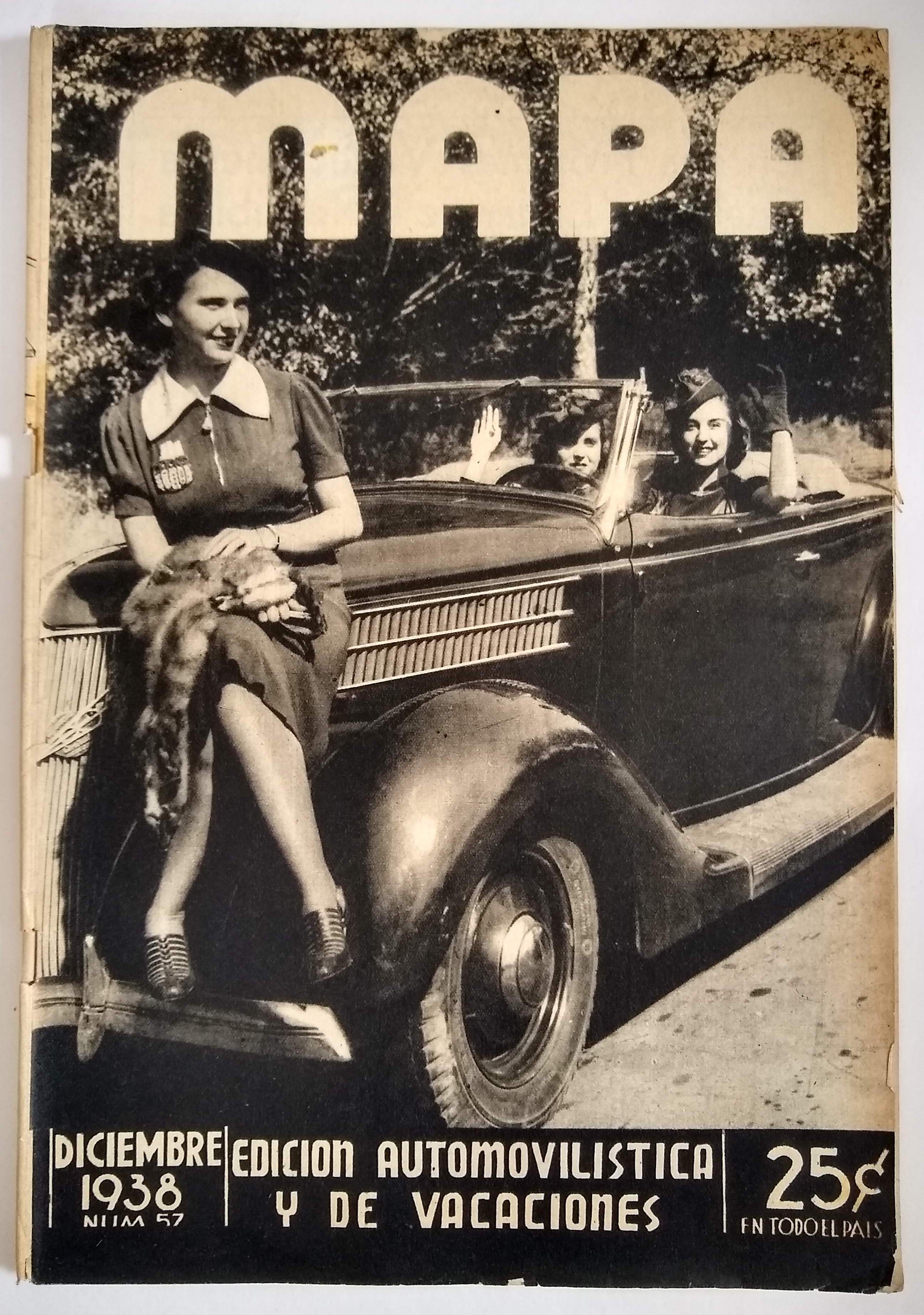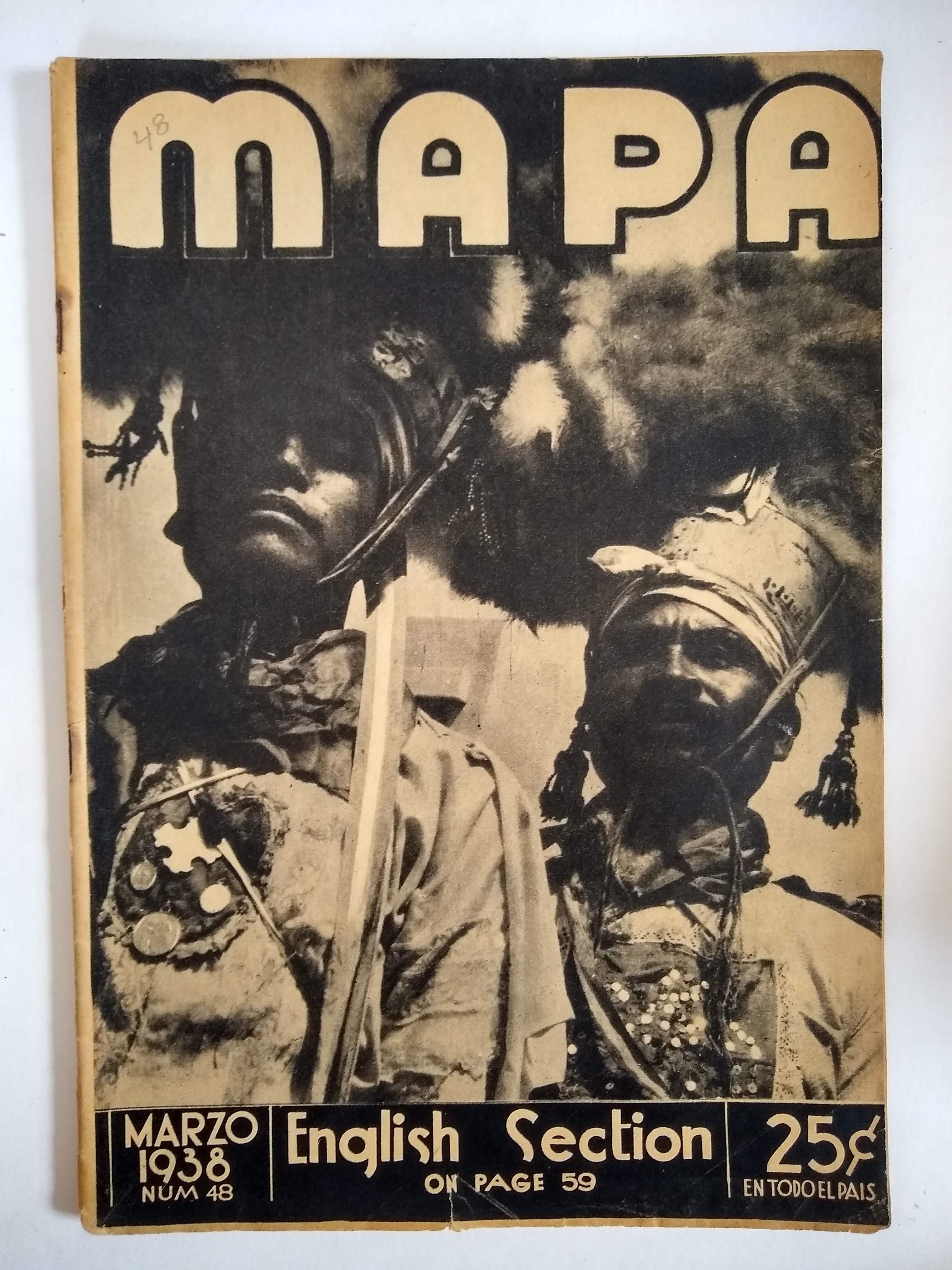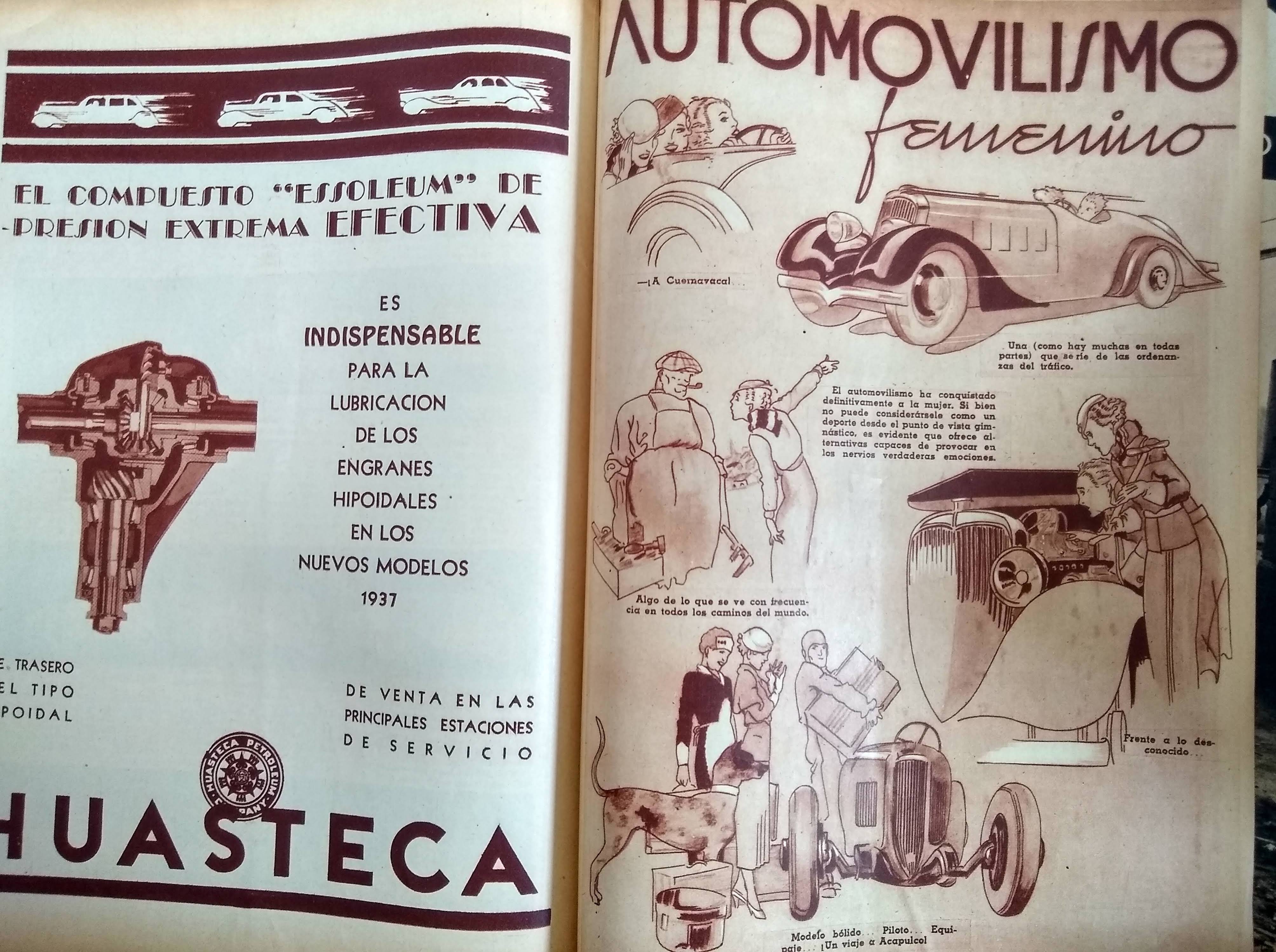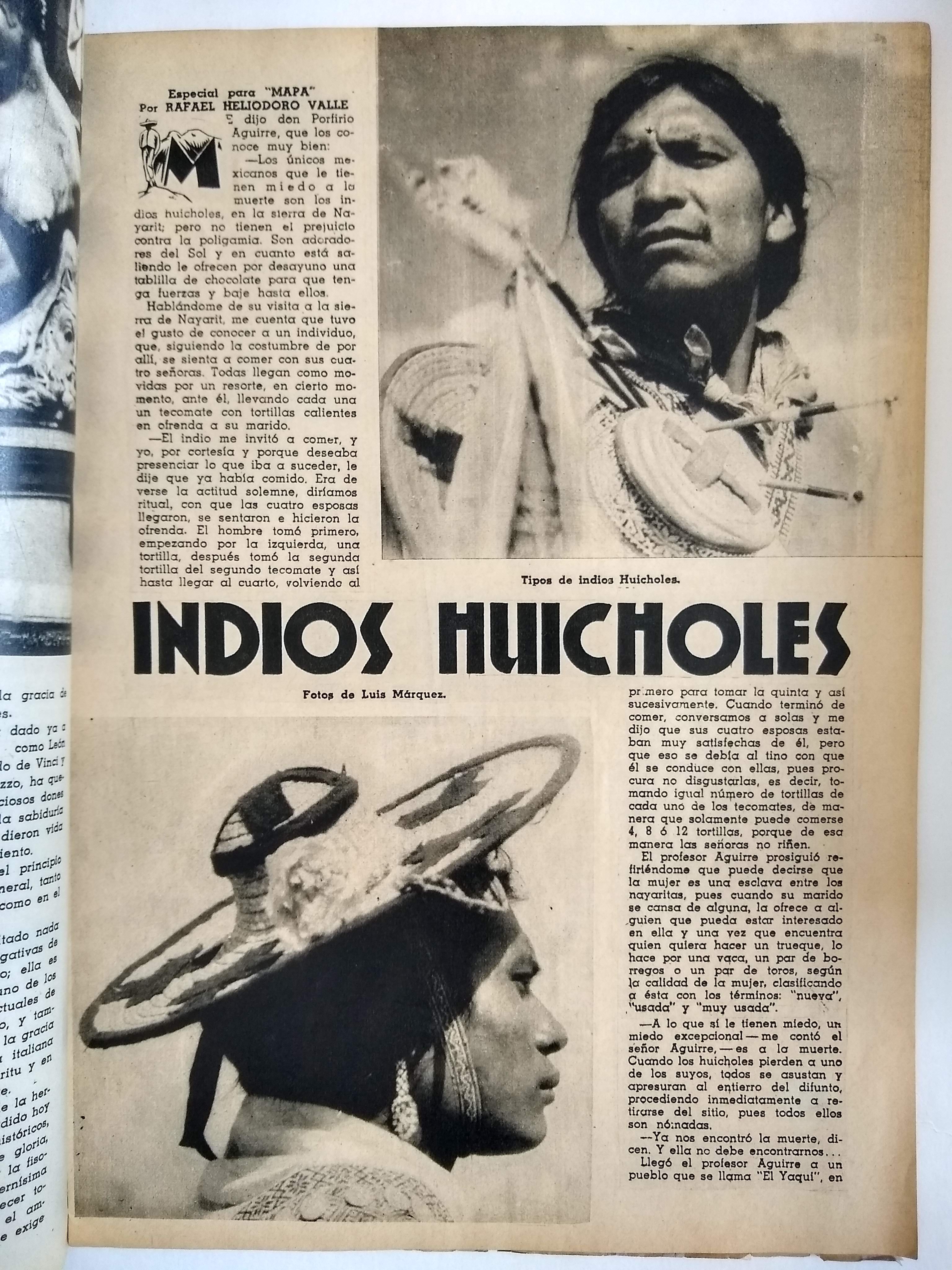GRAPH BOOKS: PRINTED MATTER FROM RADICAL ART AND SOCIAL MOVEMENTS.
FEMINIST HISTORIANS OF MATERIAL CULTURE.
MAPA: Revista de Turismo. [50 issues]
[Asociación Mexicana Automovilística], 1934-1943
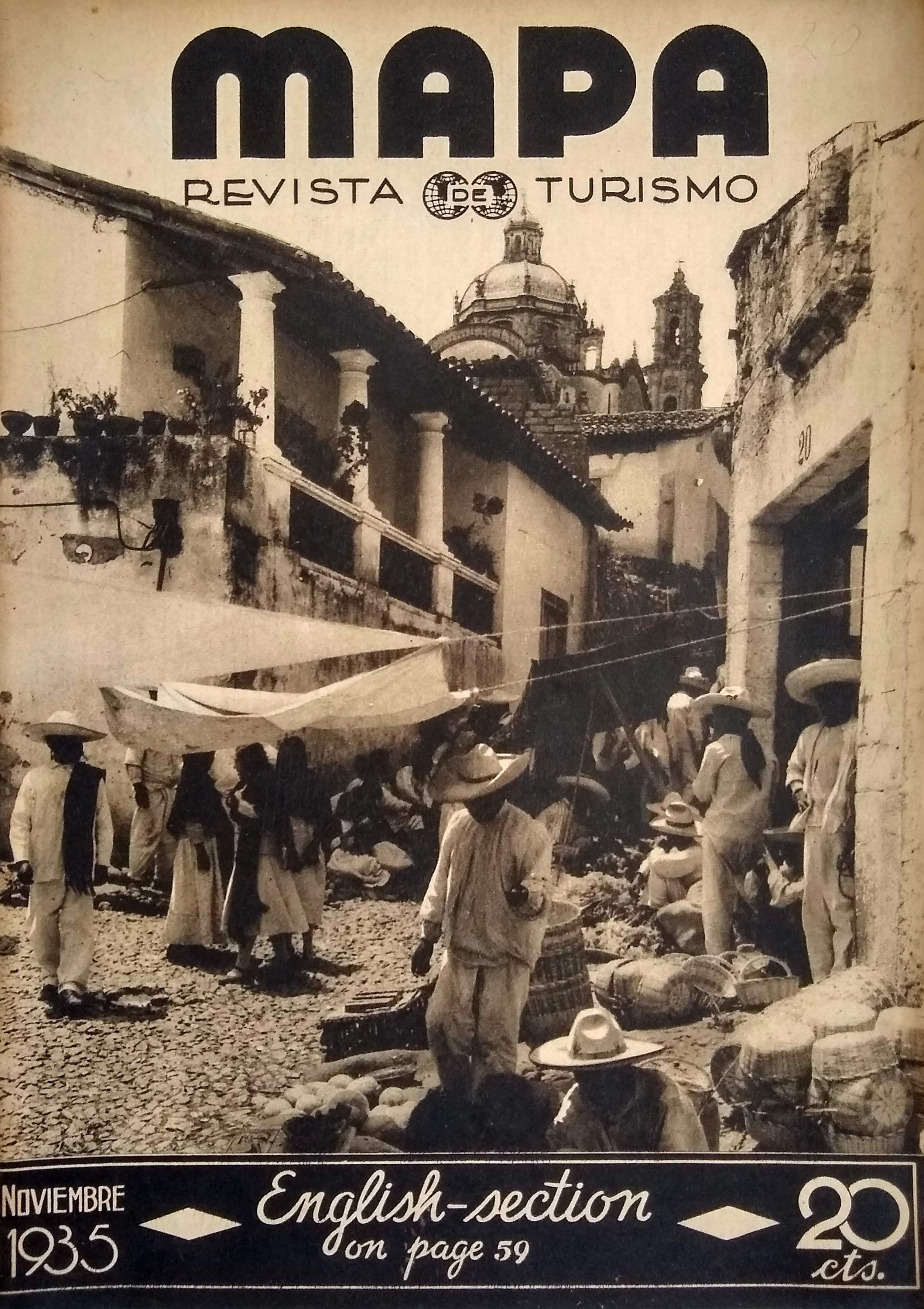
[Asociación Mexicana Automovilística]. MAPA: Revista de Turismo. Nos. 1, 3-5, 7-11, 13-22, 24, 26, 31, 34-35, 38-46, 48, 52-54, 56-59, 61-62, 78, 80, 88, 108, 114. [subtitle varies]. Mexico, D.F.: Editorial Mercurial, 1934-1943. 50 issues incl. two duplicate (nos. 9, 43), 11-¾ x 8 in., most approx. 46-64 pp.; profusely illus., largely by b/w reproductions from photos, Spanish with a short English language section in most issues; printed on fragile newsprint, many issues toned or dampstained, small tape repairs, and minor chips or closed tears throughout; pictorial stapled wrappers, stained and/or chipped, many with issue number penciled recto, nos. 7, 22, 24, 58, and 61 either loose or with substantial losses, nos. 46, 54, and 56 incomplete.
Founded in 1934, the monthly serial MAPA is now recognized as an inventive, primary document of Mexico’s national tourist program. “The story of the development of Mexico’s tourist industry unfolds during a mostly unlikely period—revolutionary state building.” Embracing both modernism and indigenism, MAPA publicized the incredibly diverse natural, archaeological, and cultural features of Mexico’s states, providing a literal roadmap for the tourist industry that continues today. The Asociación Mexicana Automovilística worked with government agencies to produce a stylized and propagandistic guide for automobile tourism, informing the public about new roads and services, promoting automobile ownership and travel, but especially highlighting popular arts, festivals, local traditions, natural resources, architecture, museums in the capital, and even foreign tourism in a monthly feature. Tourism emerged during the Cardenas administration as a post-revolutionary industry that fused nationalism and modernity by celebrating the grandeur of all things Mexican and fueling local economic growth. “It was an expression of revolutionary reconstruction rooted in capitalism, namely development, urbanization, and personal advancement.” Unfortunately it also proved to be “a kind of imperialism.”*
The editor, Francisco Borja Bolado, worked with luxury hotel impresario and AMA founding member Lucas de Palacio to engage an envious list of collaborators for MAPA. The arresting photography of the first five years was chiefly by Hugo Brehme, Luis Márquez, and Rafael Garcia, with additional contributors including Manuel Álvarez Bravo and Gerardo Murillo (Dr. Atl). In addition to accomplished staff writers, issues include articles by Nobel laureate Gabriela Mistral, historian Manuel Toussaint, poet Xavier Villaurrutía and novelist José Rubén Romero.
Hand-lettered Art Deco titles within are complemented by period advertisements for cars, hotels, perfumes, auto parts and services, etc. Although the magazine shifted in the 1940s from its initial avantgarde design, it continued in various formats until 1953.
Substantial runs of the early numbers are uncommon institutionally and in the market. OCLC finds scattered or incomplete holdings at Harvard (missing), NYPL, UC-Berkeley, and Toronto; with a more or less intact run at UT-Austin.
*Dina Berger, The Development of Mexico’s Tourism Industry: Pyramids by Day, Martinis by Night, New York: Palgrave Macmillan, 2006.
SOLD
